#20 May 1861
Photo










American Civil War: The state of Kentucky proclaimed its neutrality on May 20, 1861, which will last until September 3 when Confederate forces entered the state.
#American Civil War#Kentucky#neutrality#20 May 1861#US Civil War#USA#summer 2016#anniversary#US history#National Corvette Museum#travel#Bowling Green#Mammoth Cave National Park#Cave City#Kentucky's Stonehenge#Wigwam Village Inn 2#Munfordville#landmark#tourist attraction#roadside attraction#original photography#vacation#cityscape#landscape
2 notes
·
View notes
Note
Madame Marzi I must defer to ur wisdom
Recently you rb’d a painting with some younger ladies and in the tags talked a bit about short hair in Victorian Times
Do you have any reference for how shorter hair was styled at the time? I’ve seen plenty of paintings and such with VERY short hair (post illness or perhaps childbirth) where all you can really do is smooth it back, but what about that awkward, past the shoulders sort of stage where it’s too long to just brush back but too short to do much to? Surely they had some styling guides..?
(Also, a side question— how old would one be before going from shorter skirts to adult/full length ones?)
The two little girls in the garden (probably preteens-young teens)? Yes, I did!
It's hard to find images of women with in-between hair lengths, and I'm not sure why. Possibly because they'd find ways to put it up with false hair, whereas hair too short to put up is more obvious in photos. This could also have to do with the type of woman who has pixie- or bob-length hair voluntarily vs. mid-length: the latter is more likely to be attempting a grow-out, and thus to try her darndest to do The Culturally Accepted Long Hair StylesTM where a lady who chose a much shorter look wouldn't care. If that makes sense? Because, indeed, some of the women with very short hair were not ill or postpartum: ladies could, and did, choose to eschew long locks back then. It wasn't very common, but it happened.
(Nicole Rudolph has an excellent video about localized short hair trends for ladies during the Victorian era.)
You see a lot of these bob-type looks in photographs where the hair is center-parted and either naturally curly or curled on purpose, around the mid-19th century:

(1850s or 60s)
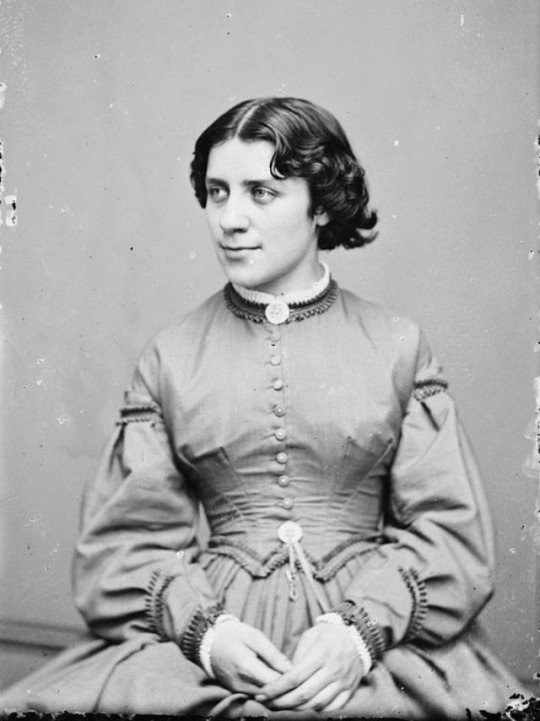
(Author, feminist, and abolitionist Anna Elizabeth Dickinson- no relation to Emily that I know of, though Anna was also a queer female writer around the same era -c. 1860s. She wore her hair short all her life, so it was voluntary in this case.)

(Also 1860s.)
Pre-Raphaelite muse Fanny Eaton frequently appears to have chin-to-shoulder length hair, though given that she was Black with a corresponding hair texture, it's hard to tell what the actual length is- it may be long and looped up in the 1850s-60s styles popular when she was most commonly painted (most free Black women in England and the US wore styles also popular with white women, to the best of their abilities given that fashion plates assumed European-textured hair as the "norm"):

(Fanny Eaton, 1861. Also worth noting that we have no images of what her hair looked like when she wasn't posing for fantastical paintings.)
I've never actually seen an image of a Victorian woman with mid-length hair outside the context of theatrical or artistic images from the end of the century, now I think of it. Huh. It's a mystery, I suppose!
As for skirts, while in earlier periods children had basically worn miniature adult clothing, it became fashionable around the 1830s-40s to dress girls in short skirts and boys in short pants. The usual rule was knee-length until around age 10, then mid-calf-length until somewhere between 16 and 18 when skirts would be "let down" and the girl would start wearing her hair up, becoming a young adult in the eyes of society. (Contrary to popular belief, this had nothing to do with marriage- while you were theoretically eligible for it when you started dressing as an adult, girls/women younger than 20 were still often considered a bit too immature to marry. It wasn't forbidden, but many people thought it unwise. And yes, unmarried young women did still wear their hair up and their skirts long.)
...unless she preferred her hair short, which as you can see, was an option!
86 notes
·
View notes
Text
so, thinking about points of inspiration for the different mechs, it’s not at all unreasonable for quite a lot of them to exist together in a (mostly) mundane historical au that keeps their backstory at least somewhat...
Like I’d say all of them but Carmilla and Aurora* can be traced back to a real Earth time and place, and a lot of those are technically close enough together for many of them to meet within natural human lifetimes. A timeline to demonstrate:
Between 100-1 BCE: Ivy, though the actual ending point of the Library of Alexandria is disputed. Caesar burned it in 48 BCE, but there’s evidence it still existed after that.
0 CE: Brian, if we’re assuming that Brian is space Jesus. Brian and Ivy could reasonably know each other in this case.
between 1300 CE and 1860 CE: Scuzz, though both these ends are fairly unlikely. From my research, it looks like the height of the ninja era in Japan was between 1400 CE-1640 CE.
1400-1500: Possibly Raphaella? She’s a mystery, but based on the advanced science, the angel imagery, and the name, I think there’s the most evidence to put her at some point in the italian renaissance.
circa 1500-1650: Brian, if we’re assuming Brian is a space witch. Most witch hunts occurred within this window. This would put any combination of Brian, Raph, and Scuzz as feasible friends!
1800s: Marius? Like Raph, he’s a mystery, and I am not an expert on historical menswear, but based on the outfit and the baron/doctor thing I think he’s probably at some point in this century.
1837-1901: Toy Soldier’s origin, assuming it’s a victorian automaton. It also does not necessarily have a reasonable death date, as it wasn’t made immortal by Dr. Carmilla.
1865-1895: Jonny
1914-1918: Tim
1918: The historical storming of the winter palace. If Nastya was irl Anastasia, this would put her as being born in 1901
1920s-1940s: Ashes, based on the timeline of the American mafia, which seems to be the point of inspiration. However, that organization was founded in 1861, and it’s theoretically possible for them to come from a time as late as the 1980s, but based on historical mob peaks and costuming, 20s-40s seems most likely.
So depending on exact times (and places where my information or analysis may be incorrect) it’s completely possible to write a historical mechs au set in the 1930s which features Marius and Jonny (possibly also scuzz) as being older, with Tim and Nastya as adults and Ashes as a young adult, and the toy soldier, as usual, present, all within reasonable human lifespans.
*I have a few vague, barely-formed ideas about Aurora, but those are based on like. a handful of words in the forbidden lore. and Carmilla’s post-apocalyptic origin makes it difficult for me to place her in a historical timeline; the future seems far more likely for her. However, if we’re going by the 1872 novel, she could have been born in the 1700s, and if she’s still a vampire could at least meet the majority of the others.
#the mechanisms#the mechs#i don't even know what to call this#meta?#jonny d'ville#nastya rasputina#ashes o’reilly#scuzz nishimura#ivy alexandria#drumbot brian#the toy soldier#gunpowder tim#marius von raum#raphaella la cognizi
166 notes
·
View notes
Text
The napoleonic marshal‘s children
After seeing @josefavomjaaga’s and @northernmariette’s marshal calendar, I wanted to do a similar thing for all the marshal’s children! So I did! I hope you like it. c:
I listed them in more or less chronological order but categorised them in years (especially because we don‘t know all their birthdays).
At the end of this post you are going to find remarks about some of the marshals because not every child is listed! ^^“
To the question about the sources: I mostly googled it and searched their dates in Wikipedia, ahaha. Nevertheless, I also found this website. However, I would be careful with it. We are talking about history and different sources can have different dates.
I am always open for corrections. Just correct me in the comments if you find or know a trustful source which would show that one or some of the dates are incorrect.
At the end of the day it is harmless fun and research. :)
Pre 1790
François Étienne Kellermann (4 August 1770- 2 June 1835)
Marguerite Cécile Kellermann (15 March 1773 - 12 August 1850)
Ernestine Grouchy (1787–1866)
Mélanie Marie Josèphe de Pérignon (1788 - 1858)
Alphonse Grouchy (1789–1864)
Jean-Baptiste Sophie Pierre de Pérignon (1789- 14 January 1807)
Marie Françoise Germaine de Pérignon (1789 - 15 May 1844)
Angélique Catherine Jourdan (1789 or 1791 - 7 March 1879)
1790 - 1791
Marie-Louise Oudinot (1790–1832)
Marie-Anne Masséna (8 July 1790 - 1794)
Charles Oudinot (1791 - 1863)
Aimee-Clementine Grouchy (1791–1826)
Anne-Francoise Moncey (1791–1842)
1792 - 1793
Bon-Louis Moncey (1792–1817)
Victorine Perrin (1792–1822)
Anne-Charlotte Macdonald (1792–1870)
François Henri de Pérignon (23 February 1793 - 19 October 1841)
Jacques Prosper Masséna (25 June 1793 - 13 May 1821)
1794 - 1795
Victoire Thècle Masséna (28 September 1794 - 18 March 1857)
Adele-Elisabeth Macdonald (1794–1822)
Marguerite-Félécité Desprez (1795-1854); adopted by Sérurier
Nicolette Oudinot (1795–1865)
Charles Perrin (1795–15 March 1827)
1796 - 1997
Emilie Oudinot (1796–1805)
Victor Grouchy (1796–1864)
Napoleon-Victor Perrin (24 October 1796 - 2 December 1853)
Jeanne Madeleine Delphine Jourdan (1797-1839)
1799
François Victor Masséna (2 April 1799 - 16 April 1863)
Joseph François Oscar Bernadotte (4 July 1799 – 8 July 1859)
Auguste Oudinot (1799–1835)
Caroline de Pérignon (1799-1819)
Eugene Perrin (1799–1852)
1800
Nina Jourdan (1800-1833)
Caroline Mortier de Trevise (1800–1842)
1801
Achille Charles Louis Napoléon Murat (21 January 1801 - 15 April 1847)
Louis Napoléon Lannes (30 July 1801 – 19 July 1874)
Elise Oudinot (1801–1882)
1802
Marie Letizia Joséphine Annonciade Murat (26 April 1802 - 12 March 1859)
Alfred-Jean Lannes (11 July 1802 – 20 June 1861)
Napoléon Bessière (2 August 1802 - 21 July 1856)
Paul Davout (1802–1803)
Napoléon Soult (1802–1857)
1803
Marie-Agnès Irma de Pérignon (5 April 1803 - 16 December 1849)
Joseph Napoléon Ney (8 May 1803 – 25 July 1857)
Lucien Charles Joseph Napoléon Murat (16 May 1803 - 10 April 1878)
Jean-Ernest Lannes (20 July 1803 – 24 November 1882)
Alexandrine-Aimee Macdonald (1803–1869)
Sophie Malvina Joséphine Mortier de Trévise ( 1803 - ???)
1804
Napoléon Mortier de Trévise (6 August 1804 - 29 December 1869)
Michel Louis Félix Ney (24 August 1804 – 14 July 1854)
Gustave-Olivier Lannes (4 December 1804 – 25 August 1875)
Joséphine Davout (1804–1805)
Hortense Soult (1804–1862)
Octavie de Pérignon (1804-1847)
1805
Louise Julie Caroline Murat (21 March 1805 - 1 December 1889)
Antoinette Joséphine Davout (1805 – 19 August 1821)
Stephanie-Josephine Perrin (1805–1832)
1806
Josephine-Louise Lannes (4 March 1806 – 8 November 1889)
Eugène Michel Ney (12 July 1806 – 25 October 1845)
Edouard Moriter de Trévise (1806–1815)
Léopold de Pérignon (1806-1862)
1807
Adèle Napoleone Davout (June 1807 – 21 January 1885)
Jeanne-Francoise Moncey (1807–1853)
1808: Stephanie Oudinot (1808-1893)
1809: Napoleon Davout (1809–1810)
1810: Napoleon Alexander Berthier (11 September 1810 – 10 February 1887)
1811
Napoleon Louis Davout (6 January 1811 - 13 June 1853)
Louise-Honorine Suchet (1811 – 1885)
Louise Mortier de Trévise (1811–1831)
1812
Edgar Napoléon Henry Ney (12 April 1812 – 4 October 1882)
Caroline-Joséphine Berthier (22 August 1812 – 1905)
Jules Davout (December 1812 - 1813)
1813: Louis-Napoleon Suchet (23 May 1813- 22 July 1867/77)
1814: Eve-Stéphanie Mortier de Trévise (1814–1831)
1815
Marie Anne Berthier (February 1815 - 23 July 1878)
Adelaide Louise Davout (8 July 1815 – 6 October 1892)
Laurent François or Laurent-Camille Saint-Cyr (I found two almost similar names with the same date so) (30 December 1815 – 30 January 1904)
1816: Louise Marie Oudinot (1816 - 1909)
1817
Caroline Oudinot (1817–1896)
Caroline Soult (1817–1817)
1819: Charles-Joseph Oudinot (1819–1858)
1820: Anne-Marie Suchet (1820 - 27 May 1835)
1822: Henri Oudinot ( 3 February 1822 – 29 July 1891)
1824: Louis Marie Macdonald (11 November 1824 - 6 April 1881.)
1830: Noemie Grouchy (1830–1843)
——————
Children without clear birthdays:
Camille Jourdan (died in 1842)
Sophie Jourdan (died in 1820)
Additional remarks:
- Marshal Berthier died 8.5 months before his last daughter‘s birth.
- Marshal Oudinot had 11 children and the age difference between his first and last child is around 32 years.
- The age difference between marshal Grouchy‘s first and last child is around 43 years.
- Marshal Lefebvre had fourteen children (12 sons, 2 daughters) but I couldn‘t find anything kind of reliable about them so they are not listed above. I am aware that two sons of him were listed in the link above. Nevertheless, I was uncertain to name them in my list because I thought that his last living son died in the Russian campaign while the website writes about the possibility of another son dying in 1817.
- Marshal Augerau had no children.
- Marshal Brune had apparently adopted two daughters whose names are unknown.
- Marshal Pérignon: I couldn‘t find anything about his daughters, Justine, Elisabeth and Adèle, except that they died in infancy.
- Marshal Sérurier had no biological children but adopted Marguerite-Félécité Desprez in 1814.
- Marshal Marmont had no children.
- I found out that marshal Saint-Cyr married his first cousin, lol.
- I didn‘t find anything about marshal Poniatowski having children. Apparently, he wasn‘t married either (thank you, @northernmariette for the correction of this fact! c:)
#Marshal‘s children calendar#literally every napoleonic marshal ahaha#napoleonic era#Napoleonic children#I am not putting all the children‘s names into the tags#Thank you no thank you! :)#YES I posted it without double checking every child so don‘t be surprised when I have to correct some stuff 😭#napoleon's marshals#napoleonic
66 notes
·
View notes
Text
My Pioneer Heritage
So, my Biological Family has pioneers in it. Matta Maria Rosenlund (who went by her Middle Name when she got to Utah) & her husband Daniel Dewey Corbett are among them
Daniel Corbett
Daniel was born in Maine on May 16 1807. He and his wife joined the Church in 1839. They moved to Nauvoo in 1844, and only learned about the Martyrdom when he was en route (which means, unfortunately, they never saw the Prophet personally). He was ordained as a Seventy when he arrived in Nauvoo, and used his skill as a Cobbler to help finish the Nauvoo Temple. They received their "partial Endowments" (I am unsure what this means, but if you're familiar with the Endowment, he got at least the Adam part) on January 12, 1846, before they & their family were forced from Nauvoo
They moved Kanesville, Iowa for years. They were able to plant & harvest their own crops, and even had a daughter who would later marry Martin Harris Jr. On July 5, 1849 the family joined the Allen Taylor company, and completed the journey to Salt Lake
When they arrived, they were allotted land between 4-5 East & 6-7 South. In the early years, he was extremely charitable (given the hardship of all the Saints during this era). He would make & mend shoes for little to no charge, collected firewood for widows, and gave what flour they could spare to those in need (they would take a brass kettle of flour to them as their Fast Offerings)
They wore homespun clothes, dying & spinning the yarn, then sending it to the mill to be made into cloth. They ate Pork, Cornbread, Jonnie Cakes, and Sugar Cane Molasses. They fasted on Thursday Morning (Fast Day was Thursday in the Early Church)
He lived close to the school, and was one of the few Saints who had a clock, so students were often sent to his home to determine the time. Daniel's family was unable to afford the 25¢ a week cost, so like many students, they paid it with vegetables
Daniel loved his wife, Elmira (born 1811). They were Sealed by Brigham Young on June 30, 1853. Unfortunately, she passed in February the next year. This lead Daniel to have to care for 6 children (ages 5-24, with the oldest being married the year before). He remarried Ann Jones, an English Convert, on November 8, 1861. Ann was married before she immigrated in 1849, but it is unknown if she was widowed or divorced. Ann had poor health, and was infertile. As her health became worse, she told Daniel to find a Second Wife, to help care for her & the 2 children left at home. This wife was Matta Rosenlund. Ann died in December 1888, and always held love for her sister-wife (although we know more about Elmira & Matta, Ann is relatively unknown, possibly because she had no children to tell her story. I hope, when the Resurrection occurs, I will be able to learn at the feet of the woman who brought my 3rd Great-grandmother into her family)
He lived many years, supporting his family, and living the Gospel until his passing on June 26, 1892. He was buried next to Ann
Matta Maria Rosenlund
Matta was born November 1, 1826 in Malmöhus, Sweden. She was the first born of Wilhelm Jonas Rosenlund & Boel Jonsson. She had 2 sisters & a brother: Anna (March 20, 1829-? She survived to Adulthood), Hannah (May 25, 1831- May 25, 1832), and Johan Wilhelm (April 10, 1834-October 2, 1836)
Both of her parents died of Cholera in Stockholm when she was 13, leading her & 10 year old Anna being placed in an Orphanage. Despite this, Matta (and presumably Anna) were educated at the King's School, given her father's illustrious military career (being the equivalent of a 4-Star General by age 30). After her education, she got a job in a bakery before marrying Ockar Victor Leonard Svansberg on May 29, 1849
Oscar was a French Sculptor & a Mason "of high degree." She was seen as more Spiritually inclined, while her husband was more Worldly. However, they were often seen together at high society events, such as Masonic Balls ("where Mr. Svansberg was usually the leader because of his pleasing appearance and personality")
Together, they had 4 Children in Stockholm: Victor Mauritz (June 25, 1850-), Maria Lovisa (July 4, 185è-), Oscar A. (1853-? Died in Infancy), and Hilma Ida Constance (May 4, 1863-)
Maria was a faithful Lutheran, but joined the Church in 1859. She spent the next 5 years trying to bring her husband to the Church. When he wouldn't join, she left him, and brought their daughters (Lovisa age 11, Ida under 1) to England with her. They sailed on the Monarch of the Sea under the direction of John Smith (Church Patriarch)
The journey was treacherous. They sailed from April 28, 1864 to June 3, 1864. There were 973 immigrants, and they were provided with little water and whatever provisions the Church could gather (Hardtack, Pork, Peas, and a little White Flour, Sugar, Coffee, and a few other things). The next day, they saw the logistical errors of feeding nearly 1,000 people when it took them 8 hours to get everyone Rice. It was also on this day the first baby died on Measles. Ida was the only baby to survive the voyage, with the other 20 either dying from the disease, or being thrown to sea. The Capitan was determined to throw Ida to sea as well, but Matta hid Ida in her Shawl. In addition to sickness, the sea was so violent that the sickbay was often full of people injured by being thrown around, and there were days when the cook was unable to safely cook (meaning there was no food those days)
After arriving in New York, she took a number of trains until she arrived in Nebraska. On July 4, 1864, Matta & her Daughters joined with the William B Preston Company, arriving in Salt Lake on September 15th, 1864. Her grandson reported that "although Zion did not appear to her as she had anticipated, she many times made the remark that when she set her feet on Utah soil it was the happiest moment of her life. The struggle to exist was a very difficult one, but she seemed obsessed with the desire to make good, and through toil, struggle, and undying faith she succeeded." Soon after her arrival, she heard from friends back in Sweden of the death of her husband
Her son, Victor wanted to join his mother & sisters on their journey, but was unable to due to his service in the Swedish Military. He arrived on July 14, 1877 (after a mere 3-weeks journey). He lived with his mother for 2 years, before disappearing without a trace
When in Utah, she became a Nurse, and helped Ann Jones. Ann & Matta (platonically) loved each other, and Ann asked Daniel to take Matta as a Plural Wife. This marriage resulted in 2 Children: George Q (November 28, 1866-September 20, 1867) & Otis (December 21, 1868-Febuary 4, 1940). Ann helped watch the Children when she was away from home, and adored all of Daniel's Children (as well as Matta's Children from her first marriage) like they were her own
Matta continued her career for over 20 years, sometimes accompanying Ella Shipp (honestly, I can write a whole essay about this badass female doctor, but you'll have to Google her for now). She was eternally optimistic, and was known for helping her patients recover rapidly. She delivered hundreds of children
I love learning about family history because of the lessons we can learn from those who came before
Daniel was a loving man. He never had much, but he was generous with what he did have. Maybe he only had a kettle of flour, but he gave that flour to those who needed it more. Although Matta's Children weren't his own, he loved them unconditionally, and gave whatever he could
Ann may have been infertile, and invalid, but she didn't let either stop her. She rejoiced in all the children of her husband's wives. She cared for them when she could muster up the strength
And Matta went through a lot. Orphaned at 13 & having to care for a sister, fearing having your daughter thrown overboard, having a son go missing without a trace, and being constantly surrounded by sickness. But she never lost hope. She was born in high society, and married into it. But her happiest moment was after she gave it up. She fought for everything she had, and that brought her joy, because she knew she had earned every blessing
I want these stories to be known. Every story deserves to be told, to live through the Ages, to inspire the Children of Men to do better
I want to hear your stories. I chose my Pioneer Ancestors because they speak to me the most. But I want to hear about the people who's stories you most value, whether your parents' story, or some obscure knight in the 12th century.
𐐔𐐰𐑌𐐷𐐲𐑊 𐐔𐐭𐐨 𐐗𐐫𐑉𐐺𐐮𐐻- 𐐕𐐰𐑉𐐮𐐻𐐨 𐐮𐑆 𐑄 𐐑𐐷𐐳𐑉 𐐢𐐲𐑂 𐐲𐑂 𐐗𐑉𐐴𐑅𐐻
𐐣𐐰𐐻𐐲 𐐣𐐲𐑉𐐨𐐲 Rosenlund (unsure how to pronounce her last name...)- 𐐆𐑁 𐐷𐐨 𐐸𐐰𐑂 𐑁𐐩𐑃 𐐰𐑆 𐐩 𐑀𐑉𐐩𐑌 𐐲𐑂 𐑋𐐲𐑅𐐻𐐲𐑉𐐼 𐑅𐐨𐐼, 𐑌𐐲𐑃𐐮𐑍 𐑇𐐰𐑊 𐐺𐐨 𐐮𐑋𐐹𐐪𐑅𐐲𐐺𐐲𐑊 𐐲𐑌𐐻𐐭 𐐷𐐭
7 notes
·
View notes
Text
Giuseppe Donizetti — served Napoleon on Elba and accompanied him during the Hundred Days

Portrait of Giuseppe Donizetti later in life
Giuseppe Donizetti was born into poverty in 1788, in the Northern Italian city of Bergamo. The eldest of his siblings, he worked from a young age, training as a tailor’s apprentice. His true talent was in music, which was spotted early on in his life.
Giuseppe was conscripted in 1808 at the age of 20. He served the Napoleonic Kingdom of Italy in the Seventh Italian Regiment. He fought against Austria in the War of the 5th Coalition in 1809. He spent the years of 1811, 1812 and 1813 in Spain.
In 1811, he was became ill en route to Spain and was hospitalized at Castelnaudary in France. 43 years later in 1854, he wrote about it to the court of the Ottoman Empire:
“Constantinople, November 22, 1854. Mémoire to His Highness Achmed-Fethy Pasha. Finding myself in a comfortable position thanks to the beneficences of Our August and Glorious Sovereign, I cede to the Hospital of Castelnaudary (Aude), in which I was ill in 1811, the portion coming to me of the legacy left by the Emperor Napoleon I to the Battalion of the Island of Elba. The papers establishing my right to participate in the credit opened up by the Decree of August 5, 1854, issued at Biarritz by His Imperial Majesty the Emperor Napoleon III, I have been obliged to send to France at the time when I was honored with a brevet as Chevalier of the Legion of Honor. Your Highness's Very humble Servant, Joseph Donizetti.”


Location and photograph of Castelnaudary
After the dissolution of the Kingdom of Italy and the First French Empire, he enlisted in the French military and was stationed on the island of Elba as a military flutist. It was on Elba, in the town of Portoferraio, where he was married in 1815.
That same year, he accompanied Napoleon during the Hundred Days, traveling with him on the same ship from Elba to Antibes, France. He likely fought at the battle of Waterloo.
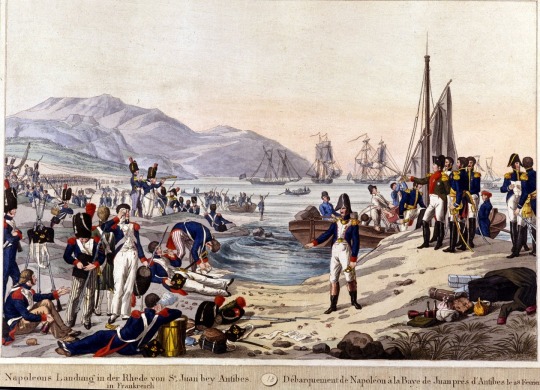
Landing of Napoleon I in Antibes in 1815
After Napoleon:
The Austrians took control of Northern Italy after the fall of Napoleon. According to the historian Emre Aracı, Giuseppe was “a greal admirer of Napoleon and the French […] Giuseppe strongly opposed his country’s domination by the Austrians. Evidence shows that he secretly took part in the Carbonari resistance and even appeared at court trials.”
Giuseppe Donizetti became a composer, and had a full career as Instructor General of the Imperial Ottoman Music. He even composed the first National Anthem of the Ottoman Empire, the Mecidiye Marşı. His main legacy is introducing Western marching music to the military of the Ottoman Empire.
He was employed by the Ottoman government on 17 September 1828 for an annual salary of 8,000 francs. This was considered a very high salary by his family. Giuseppe’s trouble with the Austrian authorities after the fall of Napoleon may have been a motivator for him to leave Italy. He moved to Constantinople at the age of 39 and spent the rest of his life there.
Giuseppe’s patron was Sultan Mahmud II, who ruled from 1808 to 1839, and Sultan Abdulmejid I, who ruled from 1839 to 1861.
According to the historian Emre Aracı:
“The Donizettis were so well-liked in the Ottoman capital that when fire broke out near their house Ahmet Fethi Pasha, the sultan's brother-in-law, ordered all the houses surrounding the maestro's home to be razed to the ground in order to prevent the flames reaching the building.”
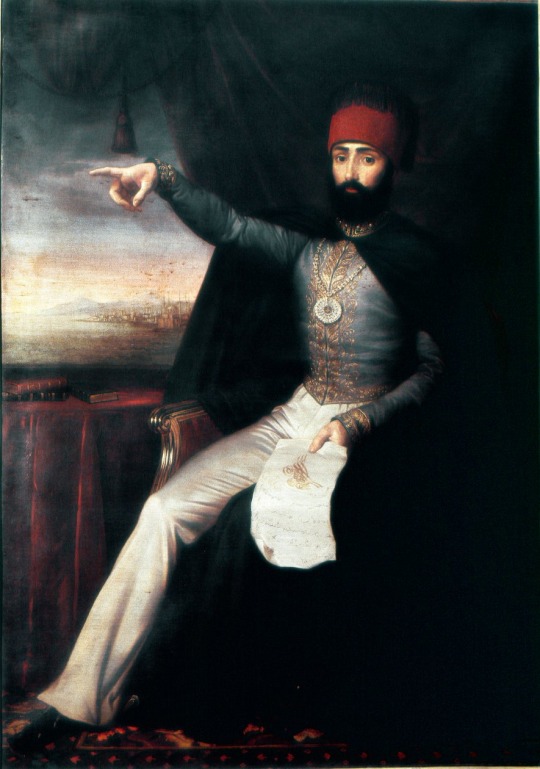
Sultan Mahmud II
His brother, Gaetano, called him his fratello turco— Turkish brother, writing to his friend that “He loves Constantinople, to which he owes everything.”
Giuseppe even encouraged his brother to move to Constantinople, but Gaetano declined. “I do not want to play the fool like my brother, the Bey, who, after having earned more than I perhaps, stays there in ancient Byzantium to scratch his belly between the plague and the stake,” wrote Gaetano.
Giuseppe moved to Constantinople two years after the creation of the Imperial Musical School (Muzıka-i Hümâyûn), which was an Ottoman institution which trained its students in Western style of music. He was specifically recruited as an expert to help lead this effort.

Giuseppe’s younger brother, Gaetano. By Francesco Coghetti, 1837
Gaetano Donizetti, though younger than Giuseppe, became the much more successful and internationally well-known brother, producing nearly 70 operas in his life. Gaetano is considered one of the most successful opera composers in history. Because of this, Giuseppe is widely known as Gaetano Donizetti’s brother. The historian Emre Aracı pointed out that this has actually been good for Giuseppe’s reputation because it has enabled him to be remembered when many other composers have been forgotten.
Both brothers were awarded the Ottoman Order of Nișan-i Iftihar. When Gaetano received the award at the Ottoman Embassy in Paris, he proudly said: “Napoleon belongs to two centuries, I to two religions.”
Burial:
Giuseppe died in 1856, and is buried in the vaults of St. Esprit Cathedral, on the European side of Constantinople, in the district called Pera (now called Beyoğlu). According to Emre Aracı, the district “was once the home of a thriving Christian community”. The Church was built in 1846, 10 years before Giuseppe died.
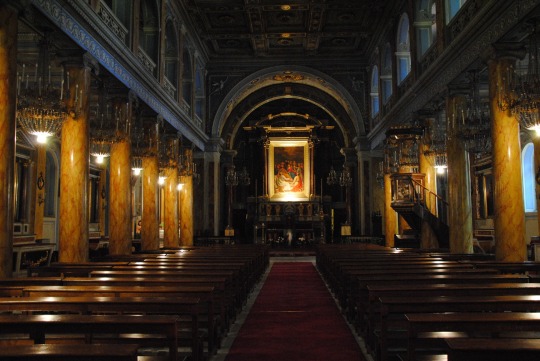
Interior of St. Esprit Cathedral
Giuseppe and his brother Gaetano are two great success stories and examples of people from impoverished backgrounds who go on to live prosperous and interesting lives.
Sources:
Herbert Weinstock, Donizetti and the World of Opera in Italy, Paris and Vienna in the First Half of the Nineteenth Century, 1963
Emre Aracı, Giuseppe Donizetti at the Ottoman Court: A Levantine Life, The Musical Times, Vol. 143, No. 1880 (Autumn, 2002), pp. 49-56
Emre Aracı, Giuseppe Donizetti Pasha and the Polyphonic Court Music of the Ottoman Empire, The Court Historian, Volume 7, 2 December 2002
Özgecan Karadağli, Western Performing Arts in the Late Ottoman Empire: Accommodation and Formation, 2020
#Giuseppe Donizetti#Donizetti#napoleonic era#napoleonic#Ottoman Empire#ottoman#napoleon#napoleon bonaparte#gaetano donizetti#turkey#turkish history#ottoman history#first french empire#French empire#history#19th century#france#french history#the hundred days#Francesco Coghetti#Istanbul#Constantinople#1800s#19th century history#Napoleon’s soldiers#opera#composers#composer
9 notes
·
View notes
Text
https://www.reuters.com/investigates/special-report/usa-slavery-families/
Heirs of Power

The forebears of three members of Congress regained – and passed forward – wealth and power their families lost when slavery was abolished. Their success shows how the Southern elite exploited Black Americans in new ways.
About a month after the Civil War began, a slaveholding ancestor of current U.S. Congressman French Hill seemed confident about the future. “Lincoln can’t starve me out unless he takes my land and negros,” plantation owner Creed Taylor wrote to a relative.
By the time the war ended in 1865, President Abraham Lincoln had freed the enslaved, including at least 70 who worked Taylor’s cotton fields here. But Taylor’s family found a path back to prosperity that didn’t look much different from the way he had first made his fortune.

In May 1861, Creed Taylor wrote to his brother to explain his support of secession. Via Arkansas State Archives
Taylor still owned at least 1,500 acres of farmland. By the turn of the 20th century, his grandson oversaw a sprawling cotton operation that would eventually grow to more than 10 times the size of Taylor’s farm. And for years, the fields would be worked once again by Black people who didn’t have a choice.
Emancipation dealt many slaveholders a staggering economic blow, wiping out vast amounts of wealth across the South. In 1870, five years after the war ended and about 4 million Black people were freed from slavery, the states that once made up the Confederacy were enduring one of the largest wealth shocks in American history. The reported wealth of Southerners dropped by $4.3 billion, or about 65%, from a decade earlier, a Reuters analysis found. Put another way, war and emancipation appear to have erased about two-thirds of wealth in the South.
For this story, Reuters traveled to Arkansas and Georgia, and interviewed more than 20 experts on Southern history and economics. Journalists also used thousands of pages of newspaper accounts, census documents, court records, history books, family papers and other material to construct this story. The data analysis of the wealth shock in the South is based on a comparison of 1860 and 1870 census data from IPUMS.
Those who lost the most, like Congressman Hill’s direct ancestor, were the largest enslavers. They also had the clearest path to rebuilding – often by replicating elements of the slavery economy and reinstituting feudal systems that embraced white supremacy.
The Black people who had been enslaved emerged with far less. Racial violence and voting laws locked them out of political power. Schooling was limited, leaving most unable to read and write. The federal government let former slaveholders keep their land, and the newly freed were afforded few paths to prosper – leaving them once again at the mercy of the white elite.
In a report published in June, Reuters found that a fifth of the U.S. political elite – congressional members, living presidents, Supreme Court justices and governors – are direct descendants of slaveholders in America. Among the richest just before the Civil War were the forebears of three members of today’s Congress: Hill, Representative Dina Titus and Senator John Kennedy. Each had a slaveholding ancestor who was among the wealthiest 1% of Americans in 1860, Reuters found. By 1870, each of those forebears had lost between 60% and 90% of their wealth.
What remained, however, was land – and key social and political connections that, a 2021 study concludes, proved critical to the financial recoveries of the largest slaveholding families.
Such connections, Reuters found, helped the ancestors of Hill, Titus and Kennedy. In each family lineage, for example, at least two slaveholders or their descendants married descendants of other enslavers, pooling their assets and increasing their influence as they shaped the South’s postwar economy.
“The power of enslavers came not simply from their ownership of property, but from their ability to wield political power and from their clans,” said Steven Hahn, a professor of history at New York University who studies slavery, capitalism and the U.S. South.
Hahn said he believes that some lawmakers in both political parties benefit from advantages that stem from the slaveholdings of their ancestors. “And to this day,” he said, “their power and wealth can’t be dissociated from that.” Representative French Hill, Republican from Arkansas Representative Dina Titus, Democrat from Nevada Senator John Kennedy, Republican from Louisiana
In examining the lineages of Hill, Titus and Kennedy, Reuters focused on how their forebears reclaimed family wealth and power in the decades following the post-war Reconstruction era. It was a time when the old South sought to reassert itself socially and politically, stripping away the rights Black people had gained during Reconstruction before federal troops withdrew from the region in 1877.

Hill’s great-great-grandfather leased prisoners, most of them Black, to pick cotton and handle other farmwork for pennies a day in Arkansas. Unlike the people Hill’s ancestors enslaved, the prisoners represented labor without substantial investment.

A forebear of Titus married the daughter of a former congressman and slaveholder, and became a regional power broker in politics and real estate. In an address to state lawmakers, he explained that “in Georgia, the white race intended to dominate the negro race and control the government of the state, no matter how large the negro majority,” according to a newspaper account at the time.

And Kennedy’s ancestors expanded the family’s Louisiana land holdings through marriage and inheritance, then used poor Black farmers to work the land. Family estate records and an interview with a descendant of one of those farmers suggest the family used both sharecropping and tenant farming, which effectively kept some of their Black neighbors in debt.
As Black people were denied basic rights, the strategies used by the ancestors of today’s political elites illustrate key facets of the legacy of slavery in America. Taken together, they make clear how the descendants of some of the largest former slaveholders regained prominence and wealth by subjugating Black people in new ways after 1865.
“At the moment of emancipation and the end of the Civil War, when there could have been a massive redistribution of wealth to the people whose forced labor had created it, that did not happen,” said Heather McGhee, author of The Sum of Us: What Racism Costs Everyone and How We Can Prosper Together. “Instead the plantation class reorganized itself and the laws to ensure continued privilege – and privilege built on the exploitation of Black labor.”
Determining how much of a family’s money today came from an ancestral slaveholder is exceedingly difficult. Fortunes made through chattel slavery – or through the abusive labor practices in the decades after emancipation – were lost, built upon or divided among multiple heirs over many generations.
But more than cash wealth was passed down. Slaveholding had enabled families to buy land and invest in other industries. It allowed access to top schools for their children, giving their descendants entry into prominent occupations. And it helped them foster relationships with other leading families, building connections that reinforced their economic interests, said Joshua Rosenbloom, an economist at Iowa State University who has studied wealth before and after the Civil War.
“At the moment of emancipation and the end of the Civil War, when there could have been a massive redistribution of wealth to the people whose forced labor had created it, that did not happen.”
While the formerly enslaved were “essentially turned loose without any assets and had to support themselves,” the wealth accrued through slaveholding provided a cushion for white families that allowed them “to suffer short-run losses” but continue to take risks, he said.

“We still have this notion of America as a land of opportunity,” Rosenbloom said. “Understanding the extent to which that’s true and the ways in which it’s constrained is central to understanding our own self-image and understanding how people succeed.”
In approaching the three lawmakers, Reuters asked about the ways their forebears regained their wealth and standing in the post-slavery South. “None of them bear any personal responsibility for the specific actions that their ancestor did,” said Douglas A. Blackmon, author of Slavery by Another Name: The Re-Enslavement of Black Americans from the Civil War to World War II. But in learning about the choices their forebears made, Blackmon said, the legislators should “consider what that history means.”
Neither Hill nor Kennedy commented specifically for this story. In June, Hill issued a statement for a previous Reuters story, calling slavery “a scourge” and saying “we as a nation must recognize our past, learn from it, and look to the future.” In 2019, Kennedy called slavery “reprehensible,” but noted: “I believe in personal responsibility, and I just don’t think someone today is responsible for what someone else did 150 years ago.”
For this article, Titus provided a statement: “Slavery is a deplorable part of our history, and I have no bonds with any long-dead relatives connected to it. We must not forget the cruelty visited upon Black Americans over generations as we commit to systemic reform that ensures equal rights for all. That principle has guided my personal life, professional career, and political record.”

The early childhood of John M. Gracie, an ancestor of U.S. Representative French Hill, was swaddled in the wealth produced by slavery. When Gracie was 4 years old, his father enslaved 11 people in New Gascony, Arkansas. Nearby, grandfather Creed Taylor enslaved 70. Combined, their estates would be worth as much as $119 million today – almost all of it in the value of their land and the Black men, women and children they listed as personal property.
After emancipation, the family retained its land. But who would work it? Gracie began experimenting with a variety of solutions after taking over from his grandfather in the 1880s, including using poor Black farmers and immigrant laborers from China.

But another option would prove lucrative, speeding the family’s path to greater prosperity and landholdings: leasing prisoners from the government.
Convict leasing involved paying the state or county for the use of prisoners, most of whom were Black. After Reconstruction ended, Southern legislatures enacted racist laws that diminished the rights of Black people and provided the pretext to jail them for petty transgressions. Often illiterate and struggling to make a living, they were ill-equipped to defend themselves in court or pay the fines that followed.
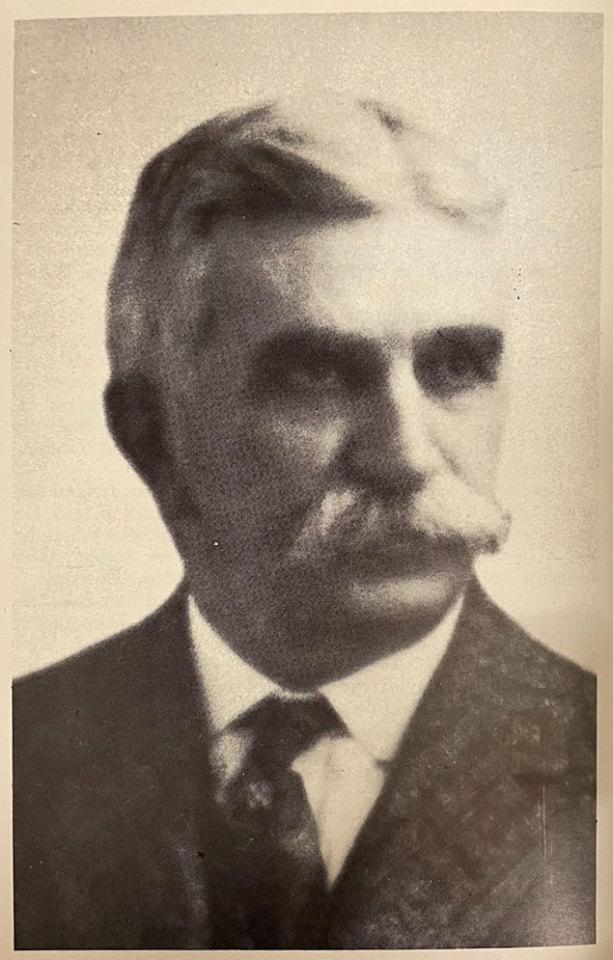
Cotton baron John M. Gracie, via The Jefferson County Historical Quarterly
Southern states used the system to address budget deficits and inadequate prison capacity after the Civil War, while providing a cheap and essentially disposable source of labor to the highest bidder.
“Convict leasing was a method of truly resurrecting something that looked almost exactly like the slavery that had existed before the Civil War,” said author Blackmon, who teaches at Georgia State University. “It was not typical for convicts to go back into the exact same kinds of plantation settings ... but Arkansas was a place where that did happen.”
Unlike purchasing the people Gracie’s ancestors enslaved, leasing prisoners didn’t require a substantial up-front investment for landowners. And if prisoners died doing the backbreaking work, others could quickly take their places.
Gracie signed contracts with local governments to use prisoners. They were housed on Gracie’s land, and the conditions were grim, according to newspaper accounts and government reports from the time. Men were whipped. Others died of heatstroke. One lost a foot to frostbite. At least a dozen prisoners, mostly Black men, lost their lives on Gracie land from 1890 to 1905, according to newspaper and state reports.
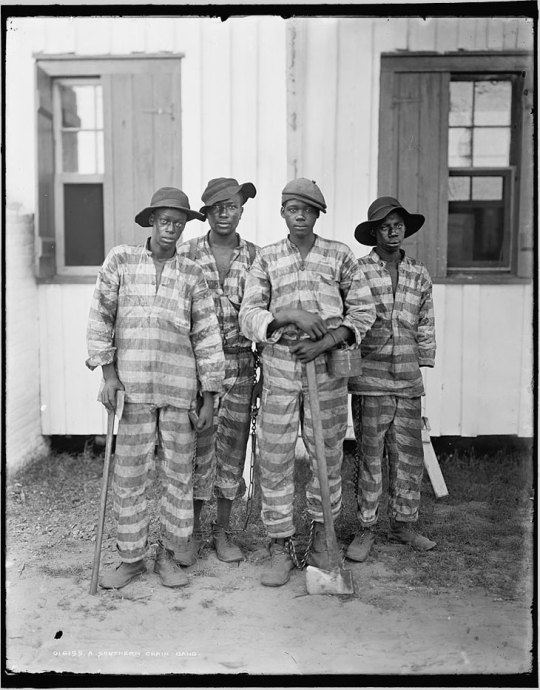
In 1888, for example, a state board reviewed a report by the penitentiary physician that examined the conditions at several prison labor camps. The report found 44 prisoners at a Gracie camp who, when not doing hard labor, were confined to a windowless pen measuring 20 feet by 20 feet. Ten years later, a Black man named Caesar Washington sued Gracie.
Washington had been pardoned by the governor of Arkansas, who noted his poor health. A petition presented by a government attorney mentioned, too, the fine and offense that put Washington on Gracie’s farm: $5 for “disturbing the peace by using profane and insulting language to a colored woman.”
In his lawsuit, Washington alleged that while serving on one of Gracie’s prison labor farms, he was “brutally beat, struck, whipped, kicked and maltreated.” The assaults were so bad, the 67-year-old shoemaker said, that he was left “wholly and permanently incapacitated from earning a living.”
Reuters could find no record showing how the suit against Gracie was resolved.
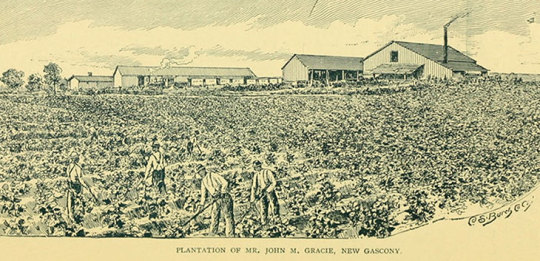
Amid similar allegations of mistreatment, Gracie thrived. He expanded the family’s farming operations, clearing thousands of acres of land around New Gascony and buying additional plantations near the Arkansas River. In 1908, news accounts said Gracie controlled 23,000 acres of land across multiple plantations and used as many as 250 prison laborers at a time.
Gracie’s precise profits are unclear. As of 1902, his contract with Pulaski County, for example, indicates he paid the local government 25 cents per day per prisoner, according to a newspaper account. Around the same time, the state of Arkansas’ own convict leasing operation, with a daily net cost of 27 cents per worker, produced a net profit of 48 cents – nearly twice as much as the cost of its labor.
After a 23-year run, Gracie ended his profitable business of using convict labor in 1909, as lawsuits and government investigations kept stacking up. In newspaper stories, Gracie had referred to the lawsuits by former prisoners as an “attempted hold up,” though he allowed that “it is impossible to handle a large number of convicts without sometimes resorting to somewhat extreme means in order to maintain discipline.”
But Gracie’s brutal practices didn’t affect his community standing. He was revered by white people in the Little Rock and Pine Bluff areas, where Gracie served as a senior executive for a bank and a railroad company. He supported local Catholic causes, helping to finance a school for Black children.
He and his family lived in Little Rock, in a Greek-revival mansion that he bought for as much as $7.6 million in today’s money. There, his wife and daughters threw parties for as many as 175 people, decorating with magnolia blossoms and Japanese lanterns.
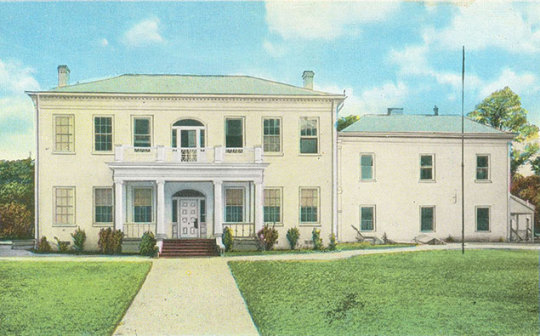
After he stopped using prisoners and Black tenant farmers, Gracie turned to Italian immigrants. But he soon soured on the Italian workers as “money mad” – they complained of debts they couldn’t work off and poor conditions, including holes in the floors of their cabins and rampant malaria. Many Italians left Gracie’s plantations. By 1918, several hundred Black tenant farmers once again worked his land, despite Gracie’s published comments years earlier in which he referred to Black laborers as “irresponsible, dishonest and very poor workmen” – a common racist trope.
His cotton empire began to crumble after prices crashed in 1920. Gracie would lose his farmland and sell the mansion in Little Rock. But in the lineage that leads to Congressman Hill, the family’s standing endured.
In 1924, Gracie’s granddaughter married another prominent Arkansan. Gracie died at the age of 76 in 1933 – the same year his granddaughter’s husband, James “Jay” Wilson Hill, established one of the first investment banking firms in the state.
Today, Gracie’s great-great-grandson is an accomplished member of Congress, representing Arkansas’ second congressional district since 2015. As a teenager, James French Hill worked summers at the family brokerage firm before attending Vanderbilt University. By his 30s, he was a U.S. Treasury Department official and a senior economic policy adviser to President George H.W. Bush.
In 1999, Hill helped found a Little Rock-based financial firm, Delta Trust & Banking Corp. Hill served as chairman and chief executive officer there.
Hill has shown a deep appreciation for history, describing himself as a ninth-generation Arkansan and serving as a commissioner for the Historic Arkansas Museum.

In 2011, when the former Gracie mansion was renovated with a loan from Hill’s Delta Trust bank, Hill wrote to the new owner. “Our family would (be) honored if you elected to name the development for John M,” the note read. It was.
In 2015, when Hill was sworn into Congress, he used a family Bible. It had been passed down from John M. Gracie’s father, a slaveholder.
Hill’s latest public financial disclosures show his net worth at between $10.3 million and $25.7 million, including his Little Rock residence. His holdings include a family investment vehicle with a name that echoes his family’s ancestral plantation: “New Gascony Company, LLC”.

Powerbrokers and the Leisure Economy
In 1820, Francis Hopkins enslaved 183 people on his cotton plantation along the coast of Georgia. The son of a British naval officer, Hopkins also was a member of the state legislature. He is the great-great-great-great-grandfather of U.S. Representative Dina Titus – and the single largest slaveholder among the ancestors of America’s political elite identified by Reuters.
Titus, in her seventh term in Congress representing the state of Nevada, is the direct descendant of at least seven slaveholders, Reuters found. Five of those ancestors lived in Georgia, where Titus was born and raised.
After the Civil War, the son of Francis Hopkins reached out to the local branch of the Freedmen’s Bureau, the agency set up to assist the formerly enslaved during Reconstruction. Thomas S. Hopkins, who had also been a slaveholder, lodged a complaint, bureau records show. “The ‘Freedman’ on his plantation refuse to work,” it read, and “he wishes them removed.”
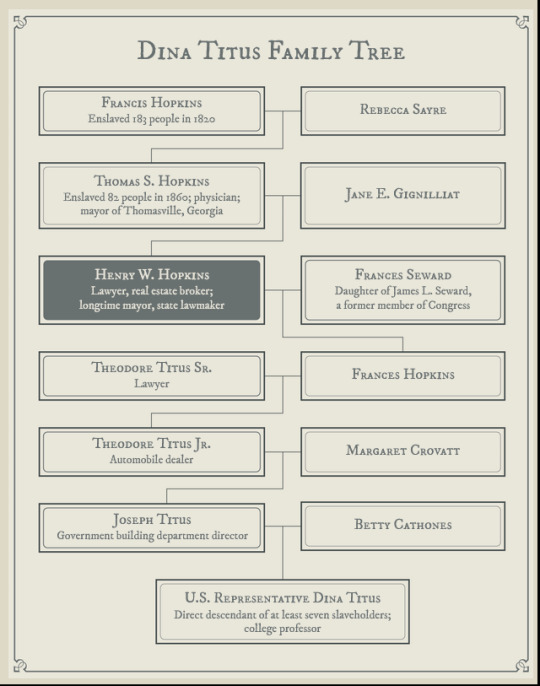
The message was a sign of things to come for the Hopkins family and the place they called home: Thomasville, a town in the deepest reaches of south Georgia.
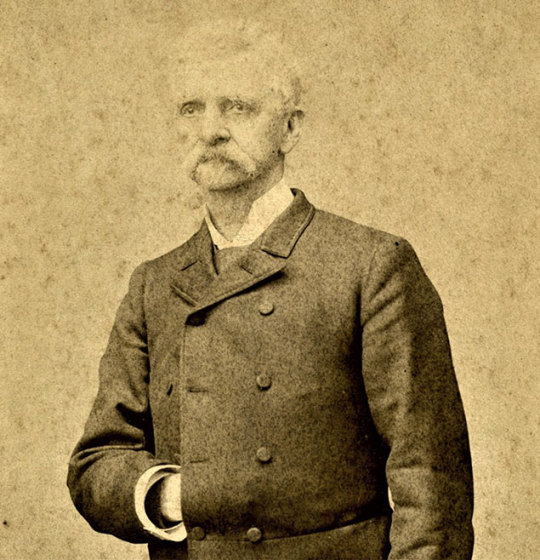
Thomas Spalding Hopkins, a physician, reimagined Thomasville as a place for those seeking relief from respiratory illnesses. Via Thomasville History Center
Many Southern landowners clung to farming, but this branch of the Hopkins family was largely forsaking agriculture. Thomas Hopkins was a physician, and by 1871 the mayor of Thomasville. Three years later, he presented a paper to the Medical Association of Georgia.
Dr. Hopkins contended that his town was the ideal place to recover from “consumption,” as tuberculosis was then called. In an 1882 letter published in the Atlanta Medical Register, he extolled the virtues of Thomasville’s “dryness of the climate” and the city’s distance from the Atlantic Ocean and the Gulf of Mexico, with their dangerous “saline vapor and moisture.”
His pitch, made through travel advertisements and testimonials to medical journals, effectively rebranded Thomasville as a destination for the ailing. The city was highlighted in a Harper’s magazine article in 1887, which described it alongside winter resorts that included the south of France, Switzerland and the Adirondacks.
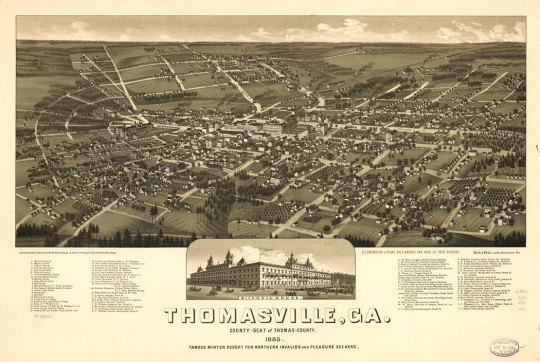
The son of Dr. Hopkins continued those efforts. But as Henry W. Hopkins himself became a prominent political figure, he used the family name and influence to launch an even greater transformation of Thomasville – one that in some ways capitalized on recreating elements of the antebellum South.
Often referred to as Judge Hopkins for one of the many offices he would hold, Henry married the daughter of a former U.S. congressman, who had also been a slaveholder. For parts of five decades that followed the end of Reconstruction, Judge Hopkins was one of the most influential men in the region.
From the mid-1880s through 1900, Hopkins spent nine terms as Thomasville’s mayor. When he wasn’t at city hall, he served in the state legislature – for 17 years between 1894 and 1926. Family papers reviewed by Reuters show Judge Hopkins traded favors with newspaper editors and politicians. He helped wealthy Northerners and Midwesterners, including Standard Oil heirs, acquire land, then hosted elaborate hunting trips. In the off-season, he often managed the plantations they bought.
In and around Thomasville, he built a social dynasty by brokering the sale of these plantations to monied outsiders, drawn to hunt quail and experience the old South.

Southerners like Hopkins “basically ran these places like their fiefdoms,” said historian Hahn. “And poor white people and poor Black people were expected to bow down to them.”
These were “big families who wielded an enormous amount of patronage and either occupied local offices or had clients who did,” he said.
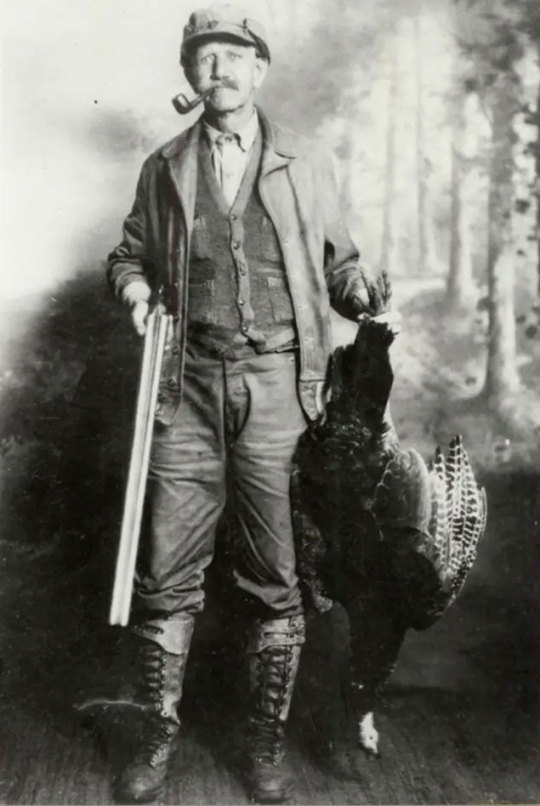
Through his law firm and real estate brokerage, Judge Hopkins “compiled, and eventually sold, almost every one of the original plantations that now are such a wonderful part of our southern life,” according to a book written by his great-grandson.
In the world Judge Hopkins helped create, the old plantations became country lodges. Well-to-do white people attended Christmas fox hunts and “fancy dress” balls where they danced the Virginia reel. Black families worked on those properties as servants and hunting guides. Part of the allure for some Northerners came in touring the homes of the county’s poorer Black residents.
“When it becomes clear that there is interest in vestiges of the old South … there’s a real sense that you can sell this,” said Julia Brock, a history professor at the University of Alabama who co-wrote a book about Thomas County and surrounding areas.
“There was a real interest in Black life,” Brock said. But that interest was in the nostalgia of the antebellum South, “not Black life as it was emerging into freedom.”
The economic success of the country-lodge plantations recaptured some of the Hopkins family’s standing as “part of a gentry,” Brock said, conferring upon him “a central place in a new social world.”
The system that now offered leisure for the wealthy still depended on Black labor, from tending dogs to driving carriages to serving supper to making sure quail nests were safe from natural predators.
It was “a feudal-type thing” for Black people, said Titus Brown, a history professor at Florida A&M University.
Brown, who co-wrote a book built around interviews with former employees of area plantations, said working on the leisure plantations was like living in a bubble. That leisure economy provided Black families with jobs and other benefits, including medical care and access to education. And it granted them “some protection, as long as they are not violating the social conduct or etiquette,” Brown said.
Judge Hopkins’ life and livelihood exemplified the nature of that social contract.
After a school for Black students burned down in a neighboring county, Hopkins donated land for a new location in Thomas County. He also connected Black people whom he knew to the white families who owned the plantations, recommending them for plum jobs.
But Hopkins had also been an early member of the Ku Klux Klan, and he sought to reassure white people that his vision for the region wouldn’t upset their primacy.
In 1905, for instance, state lawmakers debated whether to create a new county by peeling land from Thomas County and an adjacent county. Critics argued doing so would give Black residents an electoral advantage in two of the counties. Hopkins favored the move, and he testified before state lawmakers. According to The Atlanta Constitution, Hopkins “devoted his time to answering the argument of the opposition relating to negro domination,” and “closed with an eloquent reference to the fact that in Georgia the white race intended to dominate the negro race and control the government of the state, no matter how large the negro majority.” Judge H.W. Hopkins, an avid hunter, helped turn plantations into country lodges. Via Thomasville History Center
Judge Hopkins was in his 80s when sociologist Arthur Raper visited Thomasville in the early 1930s. Raper sought to explore the reasons behind lynchings in America, and two had taken place in Thomas County in 1930.
In one case, a Black man was accused of attacking a 9-year-old white girl. The man was jailed, and a mob gathered. When authorities tried to move the man to a different location, the mob wrenched him from the sheriff and told the man to run. Then they shot him repeatedly from behind.
The mob tied the man’s body to the back of a car and dragged him through town, his corpse almost hitting a pedestrian, Raper wrote. The killers did not bother covering their faces, according to Raper’s account. Still, no one came forward to identify them.
Raper wanted to learn more about the leaders of a town where such a thing could happen. Among those he interviewed was Judge Hopkins.
Hopkins and other leading citizens of Thomas County, Raper wrote, saw themselves as above poor white people. The sociologist referred to them as the “local landed aristocracy” and wrote of their paternalistic attitude toward Black people. Raper paraphrased it as: “Why you know, that fellow’s grandmother belonged to my mother’s father.”
Hopkins, he wrote, called lynchings the work of lower elements of white society: “I’ll give anybody a thousand dollars who’ll find either a son or a grandson of a slaveowner participating in a lynching.”
Raper found that Hopkins had once been a member of the Klan – using the phrase “the original Ku Klux Klan.” He was referring to the group’s first incarnation, when the Klan rose during the federal occupation of the South in the Reconstruction years. Writing in 1932, Raper said Hopkins had recently declined to join the reconstituted Klan.
Hopkins’ great-grandson later wrote of watching Judge Hopkins meet with “a group of hooded and sheeted figures” assembled on the lawn. They had come to ask him to “join in some sort of mission or action.” Judge Hopkins, according to his great-grandson, told the men to contact the police if a law had been broken. Otherwise, Hopkins told them, “you men must go home and hang up your robes for good.”
Judge Hopkins had no need to circumvent state power. He and others like him now were in control. Hopkins lived into his 90s, dying in 1945.
His great-great-granddaughter, Dina Titus, was born in Thomasville and grew up in Tifton, a town about 50 miles to the north. She graduated from the College of William and Mary, earned a master’s degree from the University of Georgia, then got a doctorate at Florida State University. She taught government for more than 30 years at the University of Nevada, Las Vegas.

Like her forebears, she pursued a career in politics. In 1988, she was elected to the Nevada State Senate, where she served as Democratic minority leader for 15 years. In 2008, she was elected to Congress.
Disclosure forms and real estate records show her net worth at between $978,000 and $2.5 million. The median U.S. family had a net worth of $193,000 in 2022, according to a survey for the Federal Reserve Board.
The Paralyzing Debt of Sharecroppers
The farm fields of Catahoula and Concordia parishes made white men rich and Black men miserable for many years in central Louisiana. Fed by a sprawling set of waterways, Concordia’s floodplains turned into what some call “million-dollar soil,” sprouting rows thick with cotton that were flanked by towering plantation homes.
Central Louisiana is where the ancestors of U.S. Senator John N. Kennedy came to secure their fortunes. In 1840, less than 30 years after Louisiana became a state, Kennedy’s great-great-great-grandfather enslaved 120 people in Concordia Parish. His estate in 1860 was worth about $57 million in current day dollars. His ancestor’s brother, a farmer and politician, enslaved 55 people on his Mississippi land in 1860. He then used cash from that estate – worth some $68 million in today’s dollars – to buy nearly 1,800 acres in neighboring Catahoula Parish.

After the Civil War, when the Black people they had enslaved were freed, the forebears of Kennedy were never again as rich. But they remained monied and powerful – a lineage of doctors, politicians and landowners surrounded by poor Black families.
Marriages between the descendants of slaveholders further grew their holdings. Among the senator’s direct ancestors was his great-grandfather, Leonidas Calhoun, who controlled large swathes of land along or near the Mississippi River Delta.
Calhoun went to medical school in Kentucky in the 1880s, then returned to live on a family plantation in Catahoula Parish. From there, he practiced medicine and oversaw hundreds of acres of farmland in Catahoula and adjacent Concordia Parish. He died in 1903 at age 44.

Portrait of Leonidas Calhoun. Via Facebook
At the time of his death, estate records examined by Reuters suggest that the Calhoun family was both sharecropping its land and also renting out larger tracts to tenant farmers.
In sharecropping, landholders typically gave farmers the right to live on and farm their land in exchange for a portion of the crops they produced. Farmers – those around the Calhoun land were typically Black and illiterate – often needed credit from their landlords simply to put a crop in the fields. Owners would front them everything from food and clothing to seeds and tools, typically provided at inflated prices and sold at stores on the plantations themselves.
After harvest, whatever was borrowed was deducted from the sharecropper’s earnings. In bad years, many may have owed more than they earned. Until those debts were repaid, laws forbade sharecroppers from leaving.

“During the end of the year, when it’s time for settlement, (landowners) would then pull out these accounting records to say, ‘Oh, you and your family almost made it out of debt,’” said Cassie Sade Turnipseed, a history professor at Jackson State University who has studied sharecropping in the Mississippi Delta.
Using the appraisal of Calhoun’s assets and matching them with census records, Reuters identified at least two Black farmers who owed Calhoun money at that time.

One was Granville Swift. Records show he owed $20 to Calhoun, and the debt was already at least six months past due. The 1900 census shows that Swift, a 23-year-old Black farmer, lived with his 22-year-old wife, who was a farmhand. Both were illiterate. Swift is also listed as a farmer in Catahoula Parish in the 1910 census, and records indicate he died there in 1918, at age 42. Reuters could find no evidence that he ever owned any of the land he farmed.
Another Black farmer who owed Calhoun money was Ben Polk. His debt was $5, according to estate records. The 1900 census for Catahoula Parish shows 49-year-old Benjamin Polk. He was listed as the head of a household with 10 other mouths to feed: his wife, eight children and one grandchild.
At some plantations, the owners issued their own scrip for use at their stores. Turnipseed, the scholar of sharecropping in the Mississippi Delta, said this meant that, even in profitable years, sharecroppers were unable “to acquire any kind of wealth because your currency would only be honored in very limited ways” on the plantation.
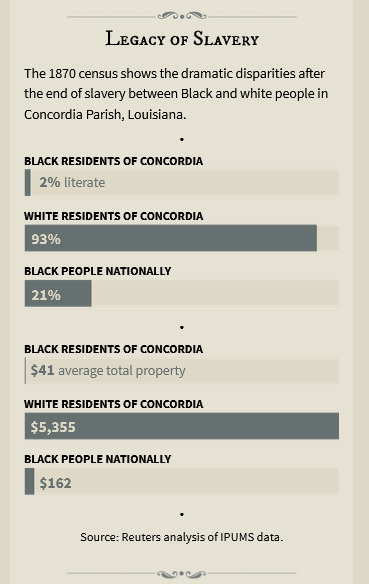
In an interview with Reuters, Ben Polk’s great-granddaughter recounted her ancestors’ description of working the Calhoun land.
Men in the family labored “sun up to sun down” in the cotton fields and had little autonomy, said Bettye Johnson, now 75. She said they were forced to buy food and goods on credit and at inflated prices in a plantation general store. Their debts often dwarfed their earnings, Johnson said.
“It was the Calhouns’ place,” Johnson said, “and they were in charge.” In the 1930 census, the occupation for Leonidas Calhoun’s son, who inherited the family land, was listed as “overseer” of a plantation.
The struggle to earn a living was intensified by violence and racial animus, some that was chronicled by the Calhoun family itself.
Legacy of Slavery
The 1870 census shows the dramatic disparities after the end of slavery between Black and white people in Concordia Parish, Louisiana.
During Reconstruction, Black residents of Concordia Parish gained power at the voting booth.
In 1860, about 91% of people living there were counted as “slaves,” the third-highest percentage of any county or parish in the United States, according to data from a recent study. After emancipation, Black people outnumbered white people in the parish 9,257 to 720.
Those figures underscore how important slavery was to families including the Calhouns, and how different the post-slavery political landscape became during Reconstruction. In the 1870s, Black men in Concordia were sheriffs and district court clerks. A formerly enslaved man was elected to the state legislature and then founded a newspaper.
A book by a local historian named Robert Dabney Calhoun, a nephew of Leonidas Calhoun, provided a window into how at least some local white people viewed those results. Black officeholders, Robert Dabney Calhoun wrote, were “illiterate, dishonest and sweating” men who carried out “unscrupulous designs.”
“Our substantial citizens were forced to engage in election manipulations,” wrote Calhoun. “They prayed for the dawning of the new day of white supremacy.”
That is what the white people of Concordia and surrounding parishes established for decades, by unleashing a deadly campaign in the 1870s.
“Lynchings, massacres, and terroristic intimidation was absolutely central to how many plantation dynasties reasserted dominance,” said John Bardes, a history professor at Louisiana State University, whose studies focus on slavery in Louisiana. “It was just horrific spasms of violence all throughout the state.”
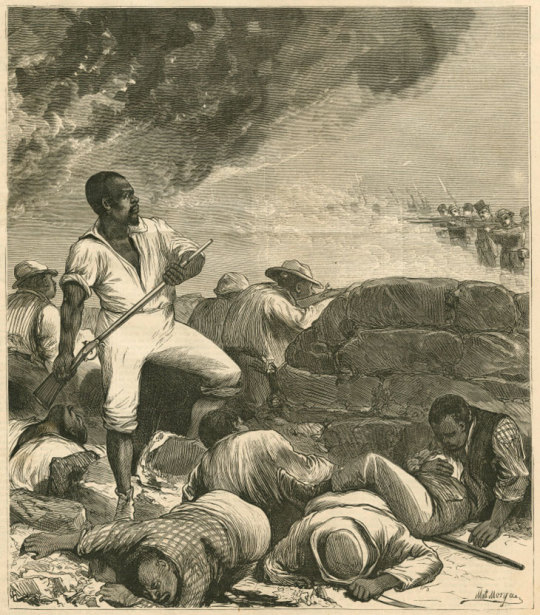
A recent report by the The Equal Justice Initiative found that Louisiana ranked third in the nation between 1877 and 1950 in what it terms “racial terror lynchings” – killings that were “acts of terrorism” outside of any legal proceedings. The state had 549 such murders in that period, the group found.
Around the time Leonidas Calhoun took control of the land in Concordia and Catahoula parishes, white people across the South had succeeded at reasserting political dominance. Another report by the Equal Justice Initiative notes that, “from 1885 to 1908, all 11 former Confederate states rewrote their constitutions to restrict voting rights using poll taxes, literacy tests, and felon disenfranchisement.”
Near the turn of the 20th century, changes in Louisiana tightly restricted who could vote. In 1897, before the changes, state records show 164,088 registered white voters and 130,344 registered Black voters. After the changes, records show 125,437 registered white voters and just 5,320 registered Black voters in 1900. The year after Leonidas Calhoun died, the number of registered Black voters across all of Louisiana had dropped to 1,718.
Today, the great-grandson of Leonidas Calhoun is the junior U.S. senator representing Louisiana. John Neely Kennedy – his middle name is the surname of two of his slaveholding ancestors – was president of his senior class at Vanderbilt University. He graduated from the University of Virginia School of Law, and earned a degree in civil law from Oxford University in England. Before being elected to the Senate in 2016, he spent five terms as Louisiana’s treasurer.

Real estate records and Kennedy’s latest public financial disclosures show his net worth is between $8.3 million and $22.6 million.
Kennedy doesn’t live in either Concordia or Catahoula parish. But after his mother died, he was named as one of the inheritors of her estate. Among her possessions listed in a 2005 probate document was hundreds of acres in Catahoula – family land that once belonged to one of Kennedy’s slaveholding ancestors.
Slavery’s Descendants
PART 1
America’s Family Secret
INTERACTIVE
Explore The Ties To Slavery
PART 2
“The Slaves Built That”
PART 3
“All We Are is Memory”
PART 4
American Dreams
PART 5
The Crown, the Cabinet and the UK’s Legacy of Slavery
PART 6
Heirs of Power
7 notes
·
View notes
Text
The Mystery of the Mary Celeste

May 11, 2023
The Mary Celeste ship was built in Spencer’s Island, Nova Scotia and was launched under British registration as Amazon on May 18, 1861. On the registration documents the ship was 99.3 feet long, 25.5 feet broad, with a depth of 11.7 feet.
She had previously been in a wreck in Cape Breton and was very damaged. In November 1868, a man named Richard W. Haines, from New York paid $1,750 (US) for the wrecked ship and spent $8,825 to restore it. In December 1868, the ship was registered to the Collector of the Port of New York as an American vessel under the name, Mary Celeste. Haines also became the captain of her.
In October 1869, the ship was seized from Haines and sold to a New York consortium. For at least three years there is no record of Mary Celeste’s trading activities. In 1872, she underwent a refit that cost $10,000 and her size was increased, and the new captain’s name was Benjamin Spooner Briggs.
In October 1872, Briggs, his wife, and infant daughter took Mary Celeste on her first voyage, after her New York refit, to Genoa, Italy. Briggs had left his school aged son behind to be taken care of by his grandmother.
Briggs chose the crew for the voyage himself, including first mate Albert G. Richardson, second mate Andrew Gilling, 25 years old, the steward was Edward William Head, and four seamen who were German from the Frisian Islands: brothers Volkert and Boz Lorenzen, Arian Martens, and Gottlieb Goudschaal. Briggs and his wife were extremely satisfied with the crew.
On October 20, 1872, Briggs went to Pier 50 on the East River in New York City to supervise the ship loading 1,701 barrels of alcohol. Briggs’ wife and infant joined him a week later.
On Tuesday, November 5, 1872, Mary Celeste left Pier 50 and went into New York Harbor. The weather was uncertain, so they waited for better conditions. After two days, the weather was good enough to begin the voyage, and so Mary Celeste sailed into the Atlantic.
A Canadian ship, Dei Gratia was nearby in Hoboken, New Jersey, waiting on cargo before they set sail. The Captain, David Morehouse, and first mate Oliver Deveau were Nova Scotians who were highly experienced. It was even rumoured that Captain Morehouse and Briggs were friends and had dined together the night before Mary Celeste departed, however the evidence of this comes from Morehouses’ widow 50 years after the event.
Dei Gratia departed for Gibraltar on November 15, 1872, following the same route as Mary Celeste had seven days earlier.
On December 4, 1872, between the Azores and the coast of Portugal, Captain Morehouse on the Dei Gratia was made aware that there was a vessel heading unsteadily towards them about 6 miles away. The ship appeared to be making erratic movements, leading Morehouse to believe something must be wrong.
Captain Morehouse noticed there was nobody on deck when the ship came closer, and they were receiving no replies from their signals. Captain Morehouse sent Deveau and his second mate John Wright in a boat to investigate the strange vessel.
The two men discovered that this vessel was indeed the Mary Celeste, as the name was on her stern, so they climbed onto the ship and found that it had been completely deserted; there was not one person around. The sails were partly set and in poor condition, some were completely missing and a lot of the rigging had been damaged, with ropes hanging over the sides. The ship had a single lifeboat that was missing. The binnacle that had the ship’s compass in it was out of place and the glass cover was broken.
There was 3.5 feet of water in the hold, however that was not suspicious for a ship of that size. A makeshift sounding rod which measures the water in the hold was found abandoned on the deck.
The Mary Celestes’ daily log was in the mate’s cabin, and the final entry date had been at 8 am on November 25, nine days before the ship was discovered. The position was recorded to be about 400 nautical miles from the point where Dei Gratia had found her.
Deveau reported that the inside of the cabin had been wet and untidy from water that had come in through doorways and skylights, however it was mostly in order. There were personal items scattered in Captain Briggs’ cabin, however most of the ship’s papers were missing, along with navigational instruments.
There was no obvious signs of fire or violence, and there was no food prepared or being prepared. It appeared that there had been an orderly departure from the Mary Celeste, the crew using the missing lifeboat.
Captain Morehouse decided to bring Mary Celeste to Gibraltar, which was 600 nautical miles away. Under maritime law, a salvor could get a decent amount of money of a rescued vessel and cargo.
Morehouse divided his crew, and sent 3 members on the Mary Celeste, which he and four other members stayed on the Dei Gratia; however this meant that each ship was very under crewed. Dei Gratia arrived at Gibraltar on December 12, while Mary Celeste arrived the next day due to fog.
The salvage court hearings began on December 17, 1872, Captain Morehouse had written to his wife that he believed he would be paid well for the Mary Celeste salvage. Testimony from Deveau and Wright convinced the court that a crime had been committed, foul play was involved.
On December 23, 1872, there was an examination of Mary Celeste, which reported that there were cuts on each side of the bow, caused by what they thought a sharp instrument. There was also what appeared to be possible traces of blood on Captain Briggs’ sword.
The report stated that the ship did not appear to have been struck by heavy weather, or been involved in a collision. A group of Royal Naval captains also examined the ship and said the cuts on the bow seemed to be caused deliberately. There was also stains on one of the ship’s rails that might have been blood, with a deep mark possibly caused by an axe.
On January 22, 1873, the reports from the court hearings were sent to the Board of Trade in London, with Frederick Solly-Flood, the Attorney General of Gibraltar concluded that the crew on the Dei Gratia had wanted to steal the alcohol on the Mary Celeste, and murdered Captain Briggs’ and his crew in a drunken frenzy. Flood believed that Captain Morehouse and his men were hiding something, that the daily log of where the Mary Celeste had been had been doctored. Flood did not believe that the ship could have travelled 400 nautical miles while being uncrewed.
It was discovered that what appeared to be “blood stains” were in fact not blood, which setback Flood’s theory of murder. Another blow was when Captain Shufeldt of the US Navy reported the marks on the bow were not man-made, but came from natural actions of the sea.
There was nothing concrete, so Flood had to release the Mary Celeste from the court’s jurisdiction on February 25, 1873. The salvage payment was decided on April 8, 1873, the award was about one-fifth of the total value of ship and cargo, far lower than what was expected.
While Flood’s theories of murder were not very convincing, there was still suspicion that the ship had met foul play of some sort. Some believed that Briggs and Morehouse were involved together, wanting the money, but it doesn’t make sense that they would have planned such an attention drawing event. Others also comment that if Briggs wanted to disappear permanently he wouldn’t of left his young son behind with his mother.
Some believed the Mary Celeste was attacked by Riffian pirates who were active off the coast of Morocco in the 1870′s, however this has been largely dismissed because pirates would have looted the ship, yet the captain’s personal possessions were found; some which had significant value.
A New York insurance appraiser named Arthur N. Putman, was a leading investigator in sea mysteries in the early 20th century. He proposed a lifeboat theory, stating that only one single lifeboat had been missing, the rope had been cut, not untied, which meant that when the Mary Celeste was abandoned, it happened very quickly.
There was multiple times in the ship’s logs where it was mentioned there was ominous rumbling and small explosions from the hold. Putman believed that the alcohol on ship gave off explosive gas and one day there was a more intense explosion of this. A sailor perhaps went below deck with a light or a lit cigar which set off fumes causing an explosion that was violent enough to blow off the top covering on the hatch, explaining why it was found in an unusual position. Putman believes Briggs and the crew were in a panic and piled into one lifeboat, abandoning Mary Celeste.
Deveau, who was one of the men who examined the abandoned ship on sea, proposed that Briggs abandoned the ship after false sounding, there might of been a malfunction of the pumps or another mishap, giving the impression the ship was taking on water at a rapid pace, the crew might have assumed the ship was in danger of sinking.
Mary Celeste made her way to Genoa, and then left on June 26, 1873. She arrived in New York on September 19, 1873. Due to the Gibraltar hearings and newspaper stories she became quite unpopular, nobody wanted her. In February 1874, Mary Celeste was sold at a considerable loss to a partnership of New York businessmen.
Mary Celeste sailed mainly in the West Indian and Indian Ocean routes, but was losing a lot of money. In February 1879, her captain was a man named Edgar Tuthill, who had fallen ill. Tuthill died and some believed the ship was cursed, as he was the third captain who had died prematurely.
In August 1884, a new captain named Gilman C. Parker took on the ship. On January 3, 1885, Mary Celeste approached a large coral reef, the Rochelois Bank, where she purposely ran into it, ripping out the bottom and wrecking her beyond repair. The crew then rowed themselves ashore, and sold what was left of the cargo for $500.
In July 1885, Parker and his shippers were tried in Boston for conspiracy to commit insurance fraud, with Parker also being charged with “wilfully casting away the ship” which was known as barratry, which you could be sentenced to death for.
On August 15, 1885, the jury could not agree on a verdict. Instead of having another trial, which cost a lot of money, the judge negotiated an arrangement where Parker and his crew withdrew their insurance claims and repaid what they got. The barratry charge was deferred and Parker was set free, though his reputation was ruined.
Parker died in poverty three months later, one of the co-defendants went mad and another ended his life. This further caused people to believe Mary Celeste was cursed.
At Spencer’s Island, Mary Celeste and her lost crew are commemorated by a monument, and by a memorial outdoor cinema built in the shape of the vessel’s hull. The fate of the crew of the Mary Celeste have never been discovered, and over 150 years later, it is unlikely we will ever discover the truth.
#mystery#unsolved#UNSOLVED MYSTERIES#unsolved crime#unsolved case#ship#vessel#true crime#Crime#sail#mary#celeste
20 notes
·
View notes
Text
Charles Haddon Spurgeon

Charles Haddon Spurgeon (1834-1892) was called to pastor the New Park Street Chapel, London, when he was only nineteen. This church became the 6,000 seat Metropolitan Tabernacle, which he pastored until his death at age 58. Through his relatively short but phenomenally productive ministry, Spurgeon pastored, directed a Pastor’s College, oversaw a Bible and tract society, organized Stockwell Orphanage, published the monthly magazine Sword and Trowel, edited a weekly sermon (among the several he preached each week), and wrote a number of books, including his well-known Treasury of David.
Timeline of the Life of Charles Haddon Spurgeon (1834-1892)
1834 (June 19) – Born at Kelvedon, Essex.
1850 (January 6) – Converted at Colchester.
1850 (April 4)- Admitted to Church membership at Newmarket.
1850 (May 3) – Baptized in the River Lark at Isle-ham.
1851 – Becomes Pastor of Waterbeach Baptist Chapel.
1853 – First literary effort, No. I of Water-beach Tracts published.
1853 (December) – Preaches at New Park Street Chapel, London, for the first time.
1854 (April) – Accepts Pastorate of New Park Street Chapel.
1855 (January) – First sermon in the “New Park Street Pulpit” published.
1855 (February) – First preaches at Exeter Hall.
1855 (July) – Mr. T. W. Medhurst becomes C. H. Spurgeon’s first ministerial student.
1856 (January 8) – Marries Miss Susannah Thompson.
1856 (June) – Metropolitan Tabernacle Building Committee formed.
1856 (September 20)- Twin sons Thomas and Charles born.
1856 (October 19) – Surrey Gardens Music Hall Disaster.
1856 (November 23) – Services recommenced at the Music Hall.
1857 – A second student accepted by C. H. Spurgeon and the Pastor’s College practically founded.
1857 (October 7) – Preaches to 23,654 persons at the Crystal Palace on Fast Day.
1859 (August 16) – Foundation Stone of the Metropolitan Tabernacle laid.
1861 (March 18) – Metropolitan Tabernacle opened with a great prayer meeting.
1864 (June 5) – The famous “Baptismal Regeneration” sermon preached.
1866 – Metropolitan Tabernacle Colportage Association founded.
1867 (March 24-April 21) – Sunday services, each attended by 20,000 persons, held at the Agricultural Hall, Islington, during the renovation of the Metropolitan Tabernacle.
1867 – Stockwell Orphanage (Boys’ side) founded.
1873 (October 14) – Foundation Stone of the Pastors’ College Building laid.
1875 – Mrs. Spurgeon’s Book Fund inaugurated.
1879 – Girls’ Orphanage founded.
1884 (June 18 and 19) – Jubilee Celebrations and presentation of testimonial (£4,500).
1887 (August) – First “Down-grade” paper published in “The Sword and the Trowel.”
1887 (October) – Withdrawal from the Baptist Union.
1891 (June 7) – Last sermon at the Metropolitan Tabernacle.
1891 (October 26) – Goes to Mentone for the last time.
1892 (January 31) – Passes away.
1892 (February 11) – Interred at Norwood Cemetery.
8 notes
·
View notes
Text
irl bsd authors
i haven't found a list of irl bsd authors listed from oldest to most recent so i decided to do that. multiple lists for date of birth, death, and publication of the work their ability is based on (if applicable) + fun stuff at the end
birth dates (oldest to most recent)
alexander pushkin - 6 Jun 1799
nathaniel hawthorne - 4 Jul 1804
edgar allan poe - 19 Jan 1809
nikolai gogol - 1 Apr 1809
ivan gonchorav - 18 Jun 1812
herman melville - 1 Aug 1819
fyodor dostoevsky - 11 Nov 1821
jules verne - 8 Feb 1828
saigiku jōno - 24 Sep 1832
louisa may alcott - 29 Nov 1832
yukichi fukuzawa - 10 Jan 1835
mark twain - 30 Nov 1835
ōchi fukuchi - 13 May 1841
paul verlaine - 30 Mar 1844
bram stoker - 8 Nov 1847
tetchō suehiro - 15 Mar 1849
arthur rimbaud - 20 Oct 1854
ryūrō hirotsu - 15 Jul 1861
ōgai mori - 17 Feb 1862
h. g. wells - 21 Sep 1866
natsume sōseki - 9 Feb 1867
kōyō ozaki - 10 Jan 1868
andré gide - 22 Nov 1869
doppo kunikida - 30 Aug 1871
katai tayama - 22 Jan 1872
ichiyō higuchi - 2 May 1872
kyōka izumi - 4 Nov 1873
lucy maud montgomery - 30 Nov 1874
akiko yosano - 7 Dec 1878
santōka taneda - 3 Dec 1882
teruko ōkura - 12 Apr 1886
jun'ichirō tanizaki - 24 Jul 1886
yumeno kyūsaku - 4 Jan 1889
h. p. lovecraft - 20 Aug 1890
agatha christie - 15 Sep 1890
ryūnosuke akutagawa - 1 Mar 1892
ranpo edogawa - 21 Oct 1894
kenji miyazawa - 27 Aug 1896
f. scott fitzgerald - 24 Sep 1896
margaret mitchell - 8 Nov 1900
motojirō kajii - 17 Feb 1901
mushitarō oguri - 14 Mar 1901
john steinbeck - 27 Feb 1902
aya kōda - 1 Sep 1904
ango sakaguchi - 20 Oct 1906
chūya nakahara - 29 Apr 1907
atsushi nakajima - 5 May 1909
osamu dazai - 19 Jun 1909
sakunosuke oda - 26 Oct 1913
michizō tachihara - 30 Jul 1914
tatsuhiko shibusawa - 8 May 1928
(ace) alan bennett - 9 May 1934
yukito ayatsuji - 23 Dec 1960
mizuki tsujimura - 29 Feb 1980
death dates (oldest to most recent)
alexander pushkin - 10 Feb 1837
edgar allan poe - 7 Oct 1849
nikolai gogol - 4 Mar 1852
nathaniel hawthorne - 19 May 1864
fyodor dostoevsky - 9 Feb 1881
louisa may alcott - 6 Mar 1888
ivan goncharov - 27 Sep 1891
herman melville - 28 Sep 1891
arthur rimbaud - 10 Nov 1891
paul verlaine - 8 Jan 1896
tetchō suehiro - 5 Feb 1896
ichiyō higuchi - 23 Nov 1896
yukichi fukuzawa - 3 Feb 1901
saigiku jōno - 24 Jan 1904
jules verne - 24 Mar 1905
kōyō ozaki - 30 Oct 1903
ōchi fukuchi - 4 Jan 1906
doppo kunikida - 23 Jun 1908
mark twain - 21 Apr 1910
bram stoker - 20 Apr 1912
natsume sōseki - 9 Dec 1916
ōgai mori - 8 Jul 1922
ryūrō hirotsu - 25 Oct 1928
ryūnosuke akutagawa - 24 Jul 1927
katai tayama - 13 May 1930
motojirō kajii - 24 Mar 1932
kenji miyazawa - 21 Sep 1933
yumeno kyūsaku - 11 Mar 1936
h. p. lovecraft - 15 Mar 1937
chūya nakahara - 22 Oct 1937
michizō tachihara - 29 Mar 1939
kyōka izumi - 7 Sep 1939
santōka taneda - 11 Oct 1940
f. scott fitzgerald - 21 Dec 1940
lucy maud montgomery - 24 Apr 1942
mushitarō oguri - 10 Feb 1946
h. g. wells - 13 Aug 1946
akiko yosano - 29 May 1942
atsushi nakajima - 4 Dec 1942
sakunosuke oda - 10 Jan 1947
osamu dazai - 13 Jun 1948
margaret mitchell - 16 Aug 1949
andré gide - 19 Feb 1951
ango sakaguchi - 17 Feb 1955
teruko ōkura - 18 Jul 1960
ranpo edogawa - 28 Jul 1965
jun'ichirō tanizaki - 30 Jul 1965
john steinbeck - 20 Dec 1968
agatha christie - 12 Jan 1976
tatsuhiko shibusawa - 5 Aug 1987
aya kōda - 31 Oct 1990
(ace) allan bennett - still alive
yukito ayatsuji - still alive
mizuki tsujimura - still alive
work (oldest to most recent)
alexander pushkin - A Feast in Time of Plague, 1830
edgar allan poe - The Murders in Rue Morgue, 1841
nikolai gogol - The Overcoat, 1842
edgar allan poe - The Black Cat, 19 Aug 1843
nathaniel hawthorne - The Scarlet Letter, 1850
herman melville - Moby-Dick, 1851
louisa may alcott - Little Women, 1858
fyodor dostoevsky - Crime and Punishment, 1866
ivan goncharov - The Precipice, 1869
yukichi fukuzawa - An Encouragement of Learning, 1872-76
jules verne - The Mysterious Island, 1875
mark twain - The Adventures of Tom Sawyer, 1876
mark twain - Adventures of Huckleberry Finn, 1884
tetchō suehiro - Plum Blossoms in the Snow, 1886
arthur rimbaud - Illuminations, 1886
saigiku jōno - Priceless Tears, 1889
ōchi fukuchi - The Mirror Lion, A Spring Diversion, Mar 1893
ryūrō hirotsu - Falling Camellia, 1894
h. g. wells - The Time Machine, 1895
kōyō ozaki - The Golden Demon, 1897
bram stoker - Dracula, 1897 (his ability has not been named, but c’mon, vampires)
akiko yosano - Thou Shall Not Die, 1903
natsume sōseki - I Am a Cat, 1905-06
katai tayama - Futon, 1907
lucy maud montgomery - Anne of Green Gables, 1908
ōgai mori - Vita Sexualis, 1909
andré gide - Strait is the Gate, 1909
kyōka izumi - Demon Pond, 1913
ryūnosuke akutagawa - Rashomon, 1915
motojirō kajii - Lemon, 1924
f. scott fitzgerald - The Great Gatsby, 1925
kenji miyazawa - Be not Defeated by the Rain, 3 Nov 1931
santōka taneda - Self-Derision, 8 Jan 1932
mushitarō oguri - Perfect Crime, 1933
chūya nakahara - This Tainted Sorrow, 1934
yumeno kyūsaku - Dogra Magra, 1935
margaret mitchell - Gone With the Wind, 1936
john steinbeck - The Grapes of Wrath, 1939
agatha christie - And Then There Were None, 6 Nov 1939
atsushi nakajima - The Moon Over the Mountain, Feb 1942
jun'ichirō tanizaki - The Makioka Sisters, 1943-48
ango sakaguchi - Discourse on Decadence, 1946
teruko ōkura - Gasp of the Soul, 1947
osamu dazai - No Longer Human, 1948
(ace) alan bennett - The Madness of King George III, 1995
yukito ayatsuji - Another, 2005
mizuki tsujimura - Yesterday’s Shadow Tag, 2015
can’t find dates:
michizō tachihara - Midwinter Memento
sakunosuke oda - Flawless
n/a: doppo kunikida, ranpo edogawa, ichiyō higuchi, h. p. lovecraft “Great Old Ones” (fictional ancient dieties eg. cthulhu), aya koda, paul verlaine, tatsuhiko shibusawa “Draconia” (umbrella term for shibusawa’s works/style)
bonus:
elise - The Dancing Girl (1890) by ōgai mori
shōsaku katsura - An Uncommon Common Man by doppo kunikida
Nobuko Sasaki (20 Jul 1878 - 22 Sep 1949) - doppo kunikida’s first wife
gin akutagawa - O-gin (1922) by ryūnosuke akutagawa
naomi tanizaki + kirako haruno - Naomi (1925) by jun'ichirō tanizaki
t. j. eckelburg + tom buchanan - The Great Gatsby (1925) by f. scott fitzgerald
the black lizard - Back Lizard (1895) by ryūrō hirotsu (+ The Black Lizard (1934) by ranpo edogawa)
some fun facts:
the oldest: aya koda 86, andré gide 81, h. g. wells 79, jun'ichirō tanizaki 79, ivan goncharov 79 (alan bennett is 89 but still alive)
the youngest: ichiyō higuchi 24, michizō tachihara 24, chūya nakahara 30
yukito ayatsuji’s Another is also an anime, released in 2012
both edgar allan poe and mark twain’s ability consist of two of the author’s work
12 notes
·
View notes
Text
LORD ULYSSES HATHERALL , OR THE SECOND SON as penned by alex , she / they .
[ 001 ] BASIC DATA .
nome : ulysses hatherall
idade : trinta anos , 20 / 09 / 1842
gênero : masculino cisgênero ( ele / dele )
sexualidade : bissexual , birromântico
título : 11º visconde de rotherham
ocupação : cirurgião da marinha real britânica
alma mater : universidade de oxford
mbti : intj ( o arquiteto )
temperamento : colérico - melancólico
pais : visconde abraham hatherall ( pai , falecido ) , viscondessa gabriela hatherall née de la vega ( mãe , falecida )
irmãos : visconde adonis hatherall ( gêmeo , falecido ) , senhorita ruolan hatherall ( meia - irmã , viva )
extensão : viscondessa viúva guiying hatherall née zhao ( madrasta , viva )
skeleton : the second son
faceclaim : enzo vogrincic
[ 002 ] RESUMO .
Doesn't matter what you do or where you go, death follows like a rotten dog at your heels. Ulysses sempre teve em vista ser fiel a si. Gêmeo, mas nascido sete minutos após o irmão, Adonis, não lhe cabia o direito de reclamar o título destinado ao mais velho, coisa que ele nunca o fez e sem qualquer ressentimento. Ainda assim, sempre esteve ali presente expectativas alheias que, quando não esperavam que ele se voltasse contra o irmão tal como Jacó contra Esaú, o comparavam ao outro como se Ulysses não passasse de um reflexo. Adonis era tratado como o gêmeo principal por ser o herdeiro, enquanto Ulysses, a cópia. Foi essa frustração que o motivou a buscar por uma identidade à parte; a chama interna que o levou até Oxford e aos estudos médicos, então ao alistamento na Marinha de Sua Majestade, a Rainha. Mesmo antes que os anos de sua ausência crescessem, Ulysses já era uma figura distante, um indivíduo confortável em ser um arquétipo separado. Já Adonis, ele não era somente o visconde, mas também o irmão predileto, o filho querido, o mestre respeitado da casa, também um nome e um rosto conhecido entre as temporadas. Enquanto isso, Ulysses punha-se a parte em cantos estrangeiros do mundo, construindo para si uma reputação separada de sua família. Dr. Ulysses Hatherall, não somente o gêmeo do Visconde de Rotherham. Até o dia em que Visconde de Rotherham se tornou ele e as identidades se misturaram novamente. Ulysses retorna tal qual um impostor tomando um lugar que não lhe pertence, ou pelo menos é o que ele sente que está fazendo. O título lhe desce torto e ele enxerga nos olhos daqueles que conheciam o antigo visconde aquela decepção de esperar um e receber o outro, aquele incômodo de ver um morto no rosto de um vivo. Ulysses retorna assombrado pelo fantasma do próprio irmão, forçado a reaprender todas as conversões de uma sociedade desacostumada com a sua presença.
[ 003 — TL;DR ] TIMELINE .
( passivo a alterações para integrar conexões )
1842, setembro — nasce os gêmeos adonis e THE SECOND SON.
1842, dezembro — falece a viscondessa, lady gabriela hatherall, por complicações no parto.
1846 — o visconde, lorde abraham hatherall desposa a lady zhao guiying.
1848 — nasce ruolan hatherall.
1859 — THE SECOND SON atende a universidade de oxford.
1861 — lorde abraham falece de insuficiência cardíaca, adonis se torna o novo visconde.
1866 — THE SECOND SON integra o exército de sua majestade, a rainha.
1866 — THE SECOND SON serve na hms reliant como cirurgião da marinha real de sua majestade sob o comando de sir alexander kensington.
1870 — adonis falece subitamente na segunda metade do ano, a análise do médico sugere o mesmo problema cardíaco que matou o pai também o levou cedo para o túmulo.
1872 — THE SECOND SON retorna à inglaterra na segunda metade do ano.
1873 — retorno de THE SECOND SON à ton como visconde de rotherham.
[ 004 ] CONNECTIONS .
TBH.
[ EXTRA ] INCORRECT TAGS .
#huge middle child syndrome with major identity issues & forced to engage into marital market, so you know he's having a hard time #literally itching every time someone calls him “lord” #man can only relax when he's wrist-deep into guts: understand case #most likely to step into a room covered by blood and casually says “don't worry, it's not mine” #looks like could kill you, is a cinnamon roll/knows exactly how to look make it look like an accident #he's a healer but *cocks gun*
2 notes
·
View notes
Photo










American Civil War: The state of Kentucky proclaimed its neutrality on May 20, 1861, which will last until September 3 when Confederate forces entered the state.
#American Civil War#US Civil War#Kentucky#neutrality#20 May 1861#USA#anniversary#US history#Bowling Green#National Corvette Museum#travel#Mammoth Cave National Park#original photography#summer 2016#vacation#tourist attraction#landmark#cityscape#landscape#countryside#roadside attraction#Wigwam Village Inn 2#Cave City#Kentucky's Stonehenge#Munfordville#architecture
2 notes
·
View notes
Text
Alright @invisible-goats let's see how many Joe Bloggs there are!
Not many, as it turns out, tbh
There was one who died in Cleveland in 1982, and one who lived in Sussex in 2003 - and this guy! Who got married in King's Lynn in 1785

He was from Chelmsford apparently, per the record, and the reason why there's two of them, probably, is. Well they just postponed the wedding, it could be any reason, but the rules were you had to have banns published for three weeks before the wedding, see, so people know it's going on an stuff, I guess, idk - and, have the chance to object, like Ann Rutledge's dad, there - so Joe and Jane here, they had two weeks' banns, and then got it republished for some reason or other - so the next document is their three-sundays-in-a-row - they basically just postponed for two weeks, really
Oh! Possibly because Joe was moving house! In the first, both him and Jane are "of this parish", and then the second one, he's "of Chelmsford" and only Jane is "of this parish". I wonder why he/they moved, there's no record of his job or anything like that.
Hmm.
Apart from them, there's not any, really - but we can check for "Joe Blogg", singular, I spose, let's see
We can jump back a bit, now - a marriage record from 1714 - 6th of May, in Tower Hamlets, I hope it was a nice day for them

Joseph Blogg, and here we see he's a Spitalfields weaver, marrying Elizabeth Clark.
Oh dear, no, but look, he died in 1722, October of that year

He's listed as still living in Spitalfields, but he's a pensioner now, I think that says, so either something's happened for him to stop work, or otherwise he's elderly - I'm not sure, cs there's no ages listed basically ever until the later-1700s, depending on where you're looking at
Ah, I think I might see

Elizabeth died in July 1722, and our Joe is still a weaver then.
Oh how sad that is
Alright, I'm going to jump forward to census times, I want to see people living please
The very very first Joe Bloggs we find is on the 1841 census, and because it's the first one that was done it's pretty shit, basically
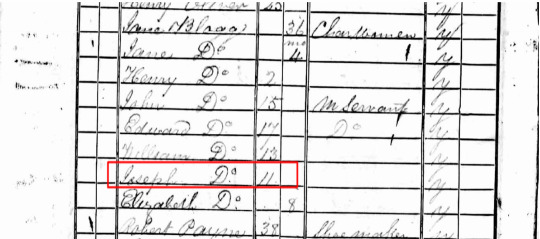
But, we can see he's 11 years old, and his mum's called Jane, and she's a charwoman (like a cleaner, basically), and he's got at least 6 siblings - in age order, it goes Edward, John, William, Joseph, Elizabeth, Henry and Jane. And they are all from Marylebone.
Let's see we can't find out what happened to this Joe!

He's a waiter! He's mid-20s, here, marrying Amelia, with his brother Henry as witness
And here they are a bit later, on the 1861 census -

He's swapped jobs, he's now a greengrocer! And here is how I know that Henry above is his brother, because here's our Jane, his sister - it doesn't say so on the 1841 census, because of course, but Joe must be from his mum's first marriage and Henry and Jane from her second, or something like that - or else, Amelia also has a relative and half-sister each called Henry and Jane, I don't know, tho Jane is the same age as our Jane Blogg, above.
The 70s show he's at the same address with the same job, but a bit more of a rabble -

Amelia, there, named for her mum, then Avies (???), Josephine, Elen, and another Joseph
I jumped forward to 1881, to try and read Avies's name better, if I could, but she's already moved out by that point - 18, she's either got a job or a husband, generally

Instead, they've moved to Hanover Square, Ellen is now called Susan, and there's another son, Thomas Charles age 7. And, Joe's swapped jobs again! He's a turkey carriage driver!
What's a one-a-them, let's have a look. Well, I can't find anything on "Turkey carriage" specifically, but I am imagining something like a hansom, a two-wheeler like this one

Here, let's see 1891 -

Cor, that girl doesn't half go through names - here she is Louisa, now!
Amelia has died, unfortunately, in the time since, so Joe is now a widower - but here we can see he's still a cabbie, look, and a groom - maybe he stables other cabbie's horses, I wonder - and helpfully, his neighbour who's name I've cut off there (it's John Higley) is a coachpainter! Extraordinarily helpful with horsedrawn coaches and cabs, I imagine
He died in 1899, this one, and it's only in death we find out his middle name is Henry, but I went back and found his baptism -

Joseph, born to John and Jane Blogg, Great Barlough, 11th Jan 1831. John is/was a coachman, so I suppose Joe followed in his footsteps, in the end
Oh dear me I'm going to have "Following in Father's Footsteps" stuck in my head for an age, now
#genealogy#well. someone's.#research#is my other tag#cries in genealogist#there are a lot more joe blogg's but i'll leave it there i think
4 notes
·
View notes
Text

I posted 1,078 times in 2022
That's 90 more posts than 2021!
1,058 posts created (98%)
20 posts reblogged (2%)
Blogs I reblogged the most:
@just--space
@firesidecottage
@caramel-flavor
@humanoidhistory
@carelessannie
I tagged 1,078 of my posts in 2022
#art history - 786 posts
#art - 783 posts
#19th century art - 278 posts
#tagamemnon - 222 posts
#classics - 212 posts
#ancient art - 200 posts
#personal - 187 posts
#landscape - 135 posts
#sculpture - 128 posts
#ancient greece - 127 posts
Longest Tag: 52 characters
#westphalian state museum of art and cultural history
My Top Posts in 2022:
#5

Stingrays, Kuniyoshi (1798-1861)
1,302 notes - Posted January 13, 2022
#4

Karasu Marsh, Akita, Hasui Kawase, 1927
1,376 notes - Posted May 5, 2022
#3

Roses, Vincent van Gogh, 1890
1,606 notes - Posted March 12, 2022
#2

Crow and Willow Tree, Kawanabe Kyosai, 1887
2,745 notes - Posted November 16, 2022
My #1 post of 2022

Nikkō Kaidō, Hasui Kawase, 1930
3,463 notes - Posted October 6, 2022
Get your Tumblr 2022 Year in Review →
#tumblr2022#year in review#my 2022 tumblr year in review#your tumblr year in review#sadly this has no statistic for the number of times I yelled at tumblr staff because my posts were flagged for no reason
22 notes
·
View notes
Text
Explaining one of VTMB paintings (part 14)

The Music Lesson, oil on canvas (1877) by Fredric Leighton
Sir Fredric Leighton, 1st Baron Leighton (Dec 3 1830 - Jan 25 1896) was a British Victorian painter, draughtsman and sculptor born in Scarborough, Yorkshire. He was educated at the University Collage School in London. He designed the tomb for the English Poet Elizabeth Barret Browning in English Cemetery,Florence in 1861. He was the first President of the Commitee commissioning the Suervay of London which was in charge of documenting public works of art and architecture. He was knighted at Windsor in 1878 and made Baronet of Hollow Park Road in the Parish of St. Mary Abbots, Kensington in 1886.
A Victorian painter refers to the distinctive art style of painting in the UK during the reign of Queen Victoria (1837-1901). Specifically the academic art style coming from mainly the Royal Academy of the Arts with Leighton being one of the most recognized of this style. Focused on Christian, British Royalism and Imperial with an overall optimistic tone and close attention to even the smallest of details. The biggest change was the shift away from the traditional focus on storytelling and moralizing subject matter as the subjects of art. Instead choosing subjects based on aesthetic appeal which contrasted their contemporaries Pre-Raphaelites. [1]
The Architecture depicted in the background of The Music Lesson is based on Leighton study of architecture from his trip to Damascus, Syria in 1873. The black and white stripes of the stone building are a style of Islamic architecture ablaq. In Syria Ablaq is often used to decorate arches of Mosques, palaces and Sufi lodges. The technique of ablaq may have originated from Syria or the Byzantine Empire. One of the first written records on the use of ablaq masonry was found regarding repairs done to the northern wall of the Great Mosque of Damascus in 1109 [2]. The musical instrument that is the center of the lesson is a Baglama (sometime called a saz) which is a type of long necked seven string lute used in both Turkish and Azerbaijani folk music [3]. The choice of architecture and instrument are most likely based on their aesthetic beauty and to give the work a small amount of exotic flare. The two British models depicted in the painting appear in a number of Leighton works. The younger girl is Connie Gilchrist( Jan 23 1865-May 6 1946) who as a child was a rather famous art model, actress and singer that work with a number of other artist including Frank Holl, James McNeil Whistler and author/photogrpher Lewlis Carol (author of Alice in Wonderland). As an adult she married Edmond Walter FitzMaurice, the 7th Earl of Orkney (Orkney is a archipelago in the norther isles of Scotland) making her the Countess of Orkney. [4]
[1]“Frederic Leighton.” Wikipedia, Wikimedia Foundation, 1 Oct. 2023, en.m.wikipedia.org/wiki/Frederic_Leighton.
[2]“Ablaq.” Wikipedia, Wikimedia Foundation, 22 Oct. 2023, en.m.wikipedia.org/wiki/Ablaq#:~:text=Ablaq%20(Arabic%3A%20أبلق%3B%20particolored,architecture%20in%20the%20Arab%20world.
[3]“Bağlama.” Wikipedia, Wikimedia Foundation, 15 Oct. 2023, en.m.wikipedia.org/wiki/Ba%C4%9Flama.
[4]“Connie Gilchrist, Countess of Orkney.” Wikipedia, Wikimedia Foundation, 30 July 2023, en.m.wikipedia.org/wiki/Connie_Gilchrist,_Countess_of_Orkney#:~:text=Connie%20Gilchrist%20(23%20January%201865,Lewis%20Carroll%20and%20aristocrats%2C%20Lord.
#Fredric Leighton#victorian painting#Victorian art style#vtmb#Explaining one of VTMB paintings#art history#vampire the masquerade bloodlines#Ablaq#Baglama
2 notes
·
View notes
Text
2 REMARKABLE WRITERS IN PERIOD OF ENLIGHTENMENT (PRE-SPANISH):
-José Protasio Rizal Mercado y Alonso Realonda (June 19, 1861 – December 30, 1896), was a Filipino nationalist, writer and polymath active at the end of the Spanish colonial period of the Philippines. He is considered the national hero (pambansang bayani) of the Philippines. An ophthalmologist by profession, Rizal became a writer and a key member of the Filipino Propaganda Movement, which advocated political reforms for the colony under Spain.
-His political writings, which spurred the Philippine revolt and ultimately led to his execution by the Spanish invaders, made him a versatile intellectual and political activist who is most known for his political writings.

-Antonio Abad y Mercado(May 10, 1894- April 20, 1970), was a prominent Filipino poet, fictionist, playwright and essayist.
-Abad was one of the most significant writers of Hispanic-Filipino literature in his age, penning plays and novels that criticized the American occupation of the islands. In the future, his writings would be recognized as being a part of the Golden Age of Fil-Hispanic Literature (1898–1941).
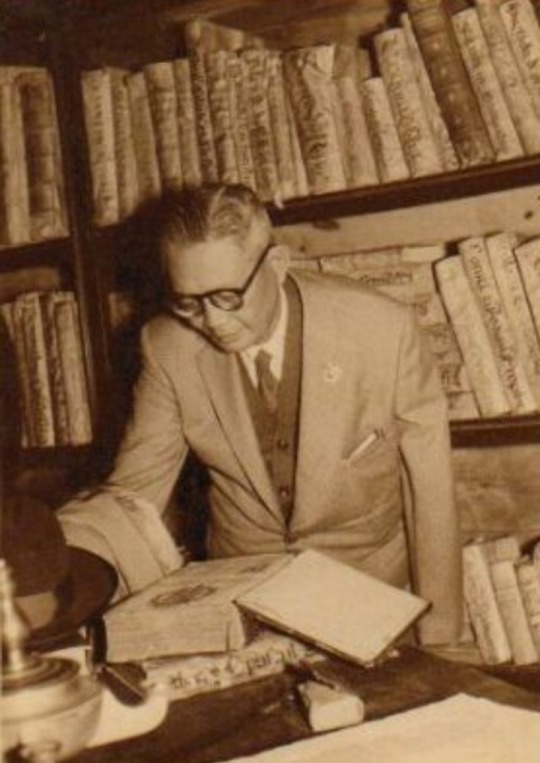
Photo credit/reference: Wikipedia contributors. (2023m). José Rizal. Wikipedia. https://en.wikipedia.org/wiki/Jos%C3%A9_Rizal
Wikipedia contributors. (2023b). Antonio Abad. Wikipedia. https://en.wikipedia.org/wiki/Antonio_Abad
2 notes
·
View notes